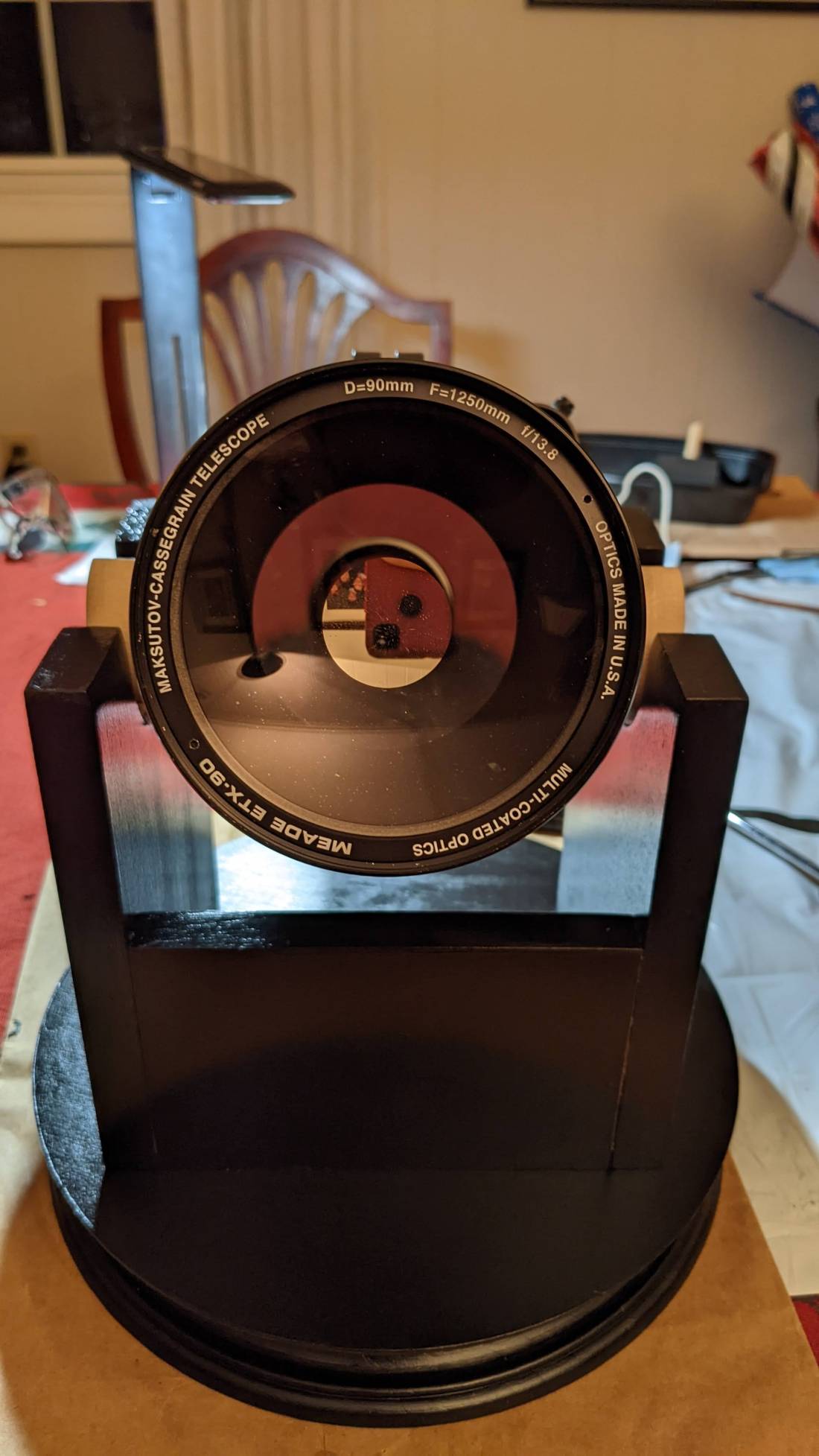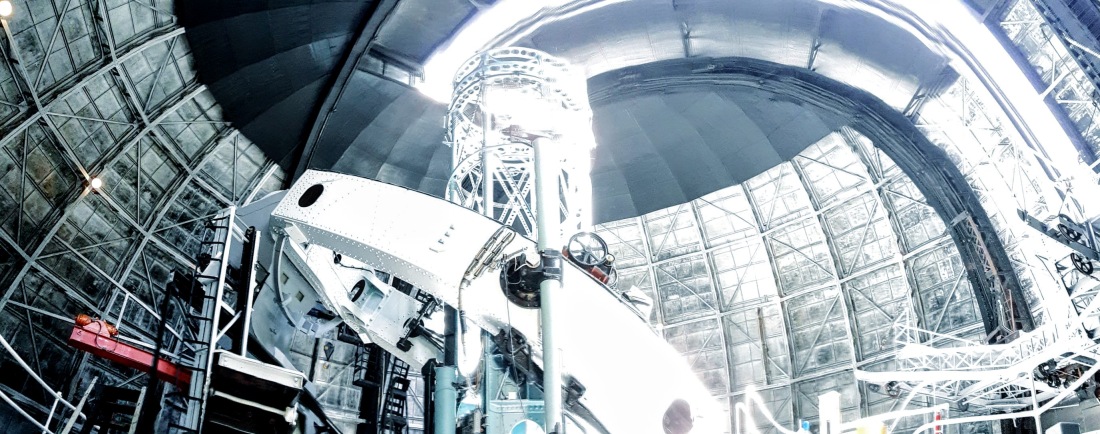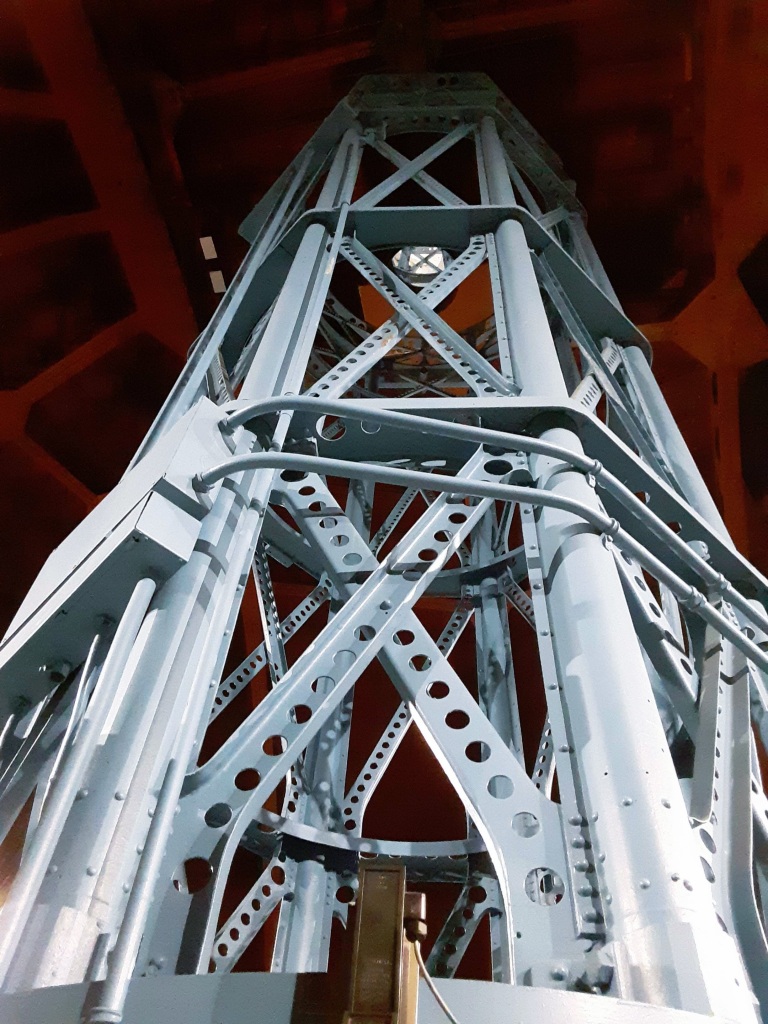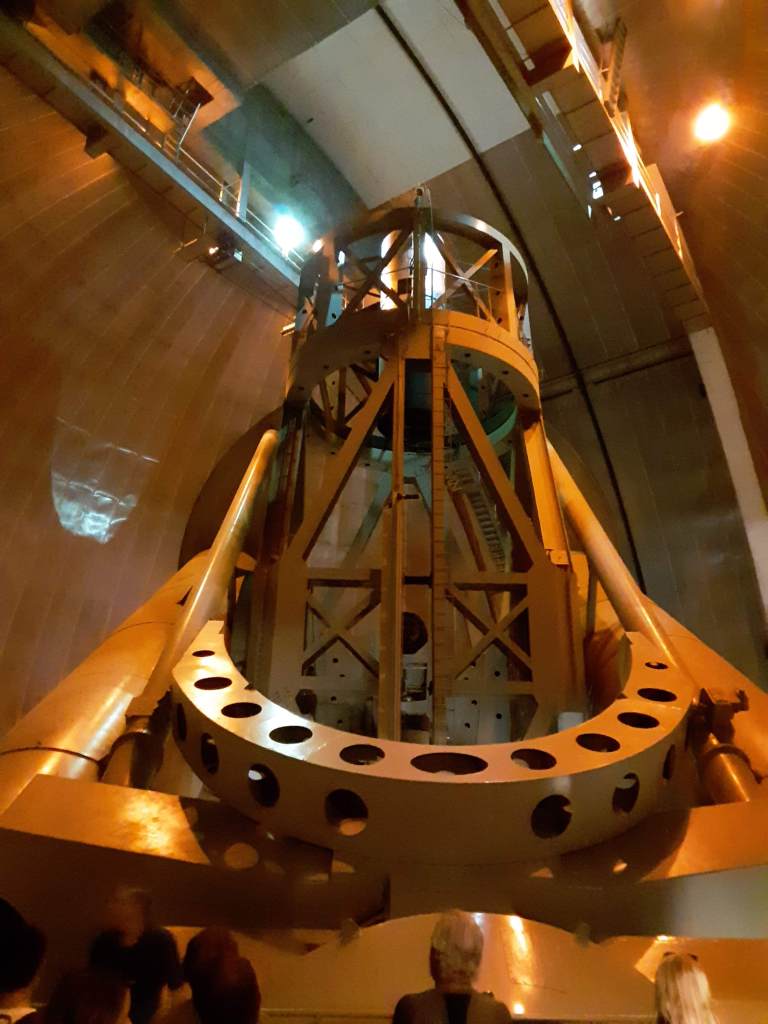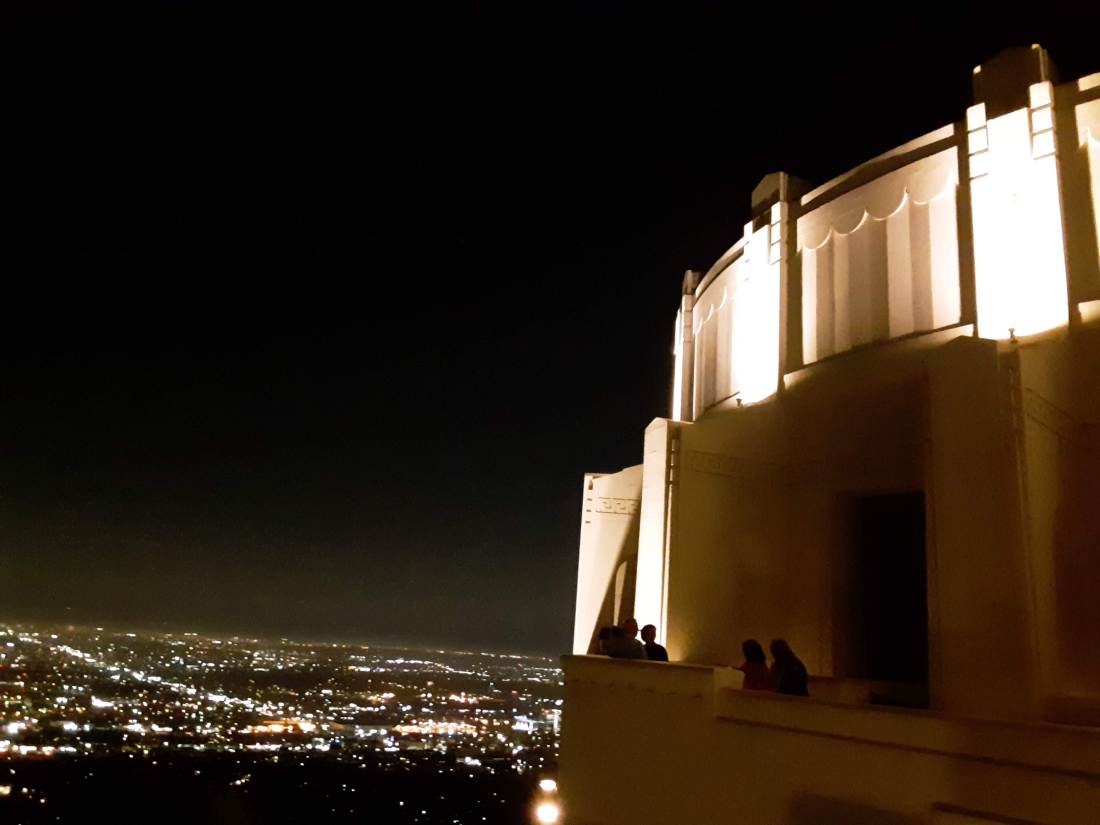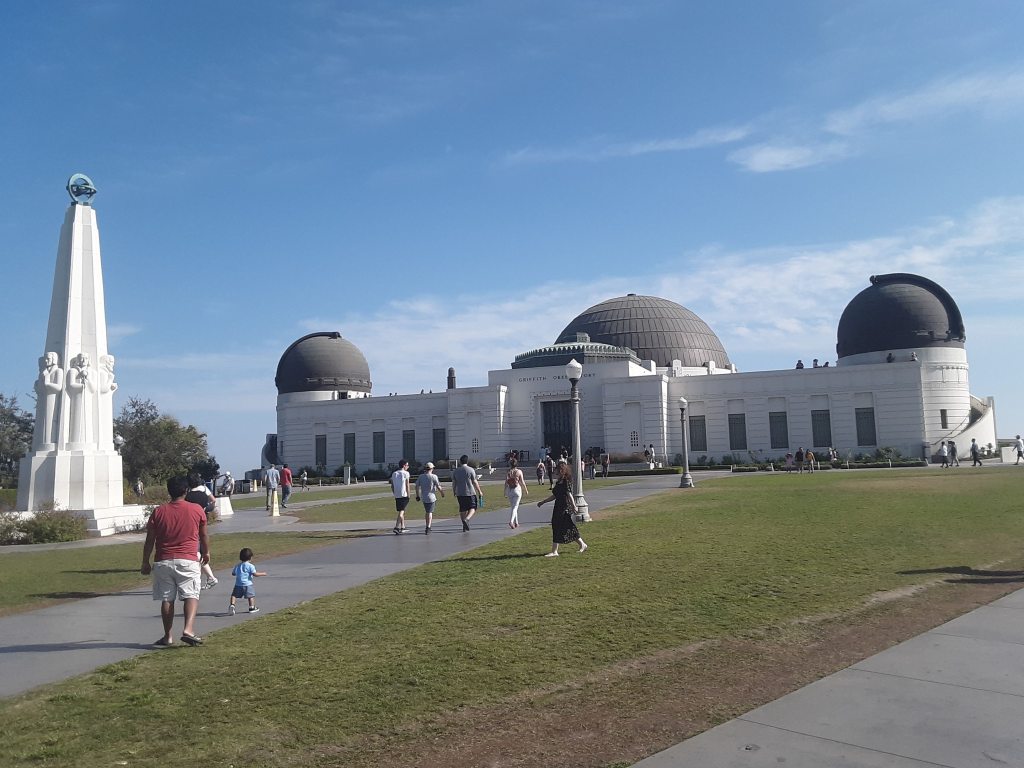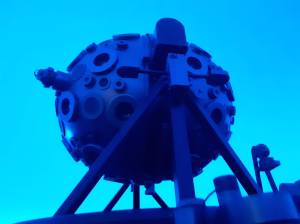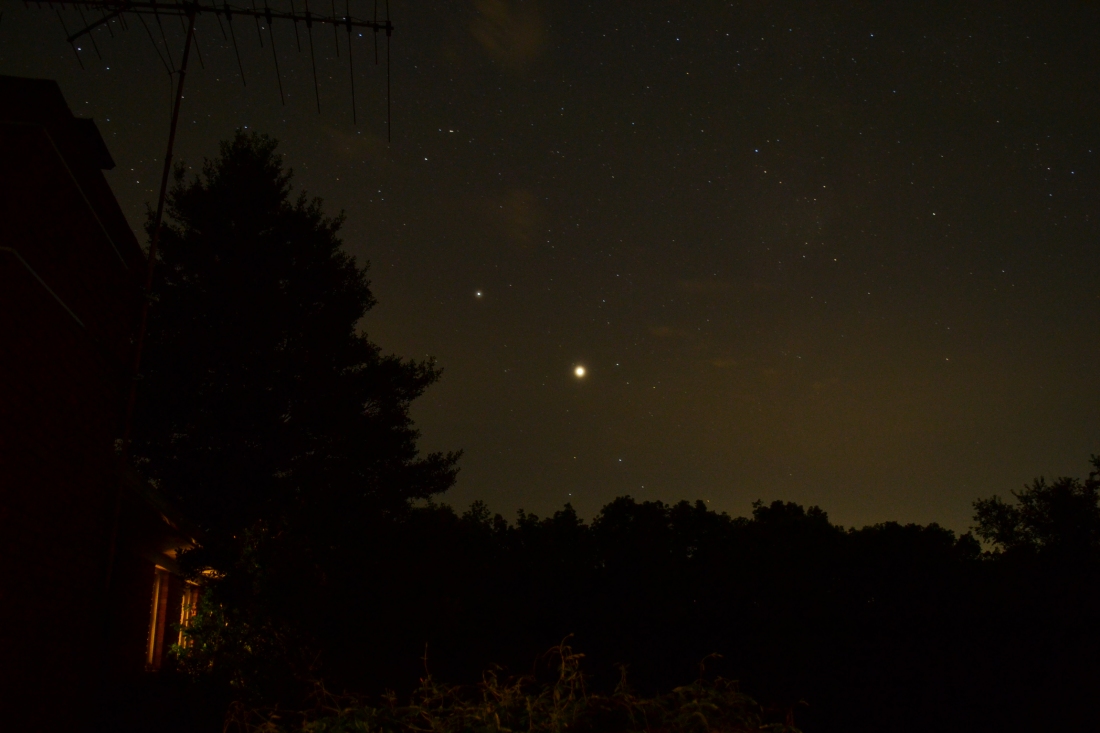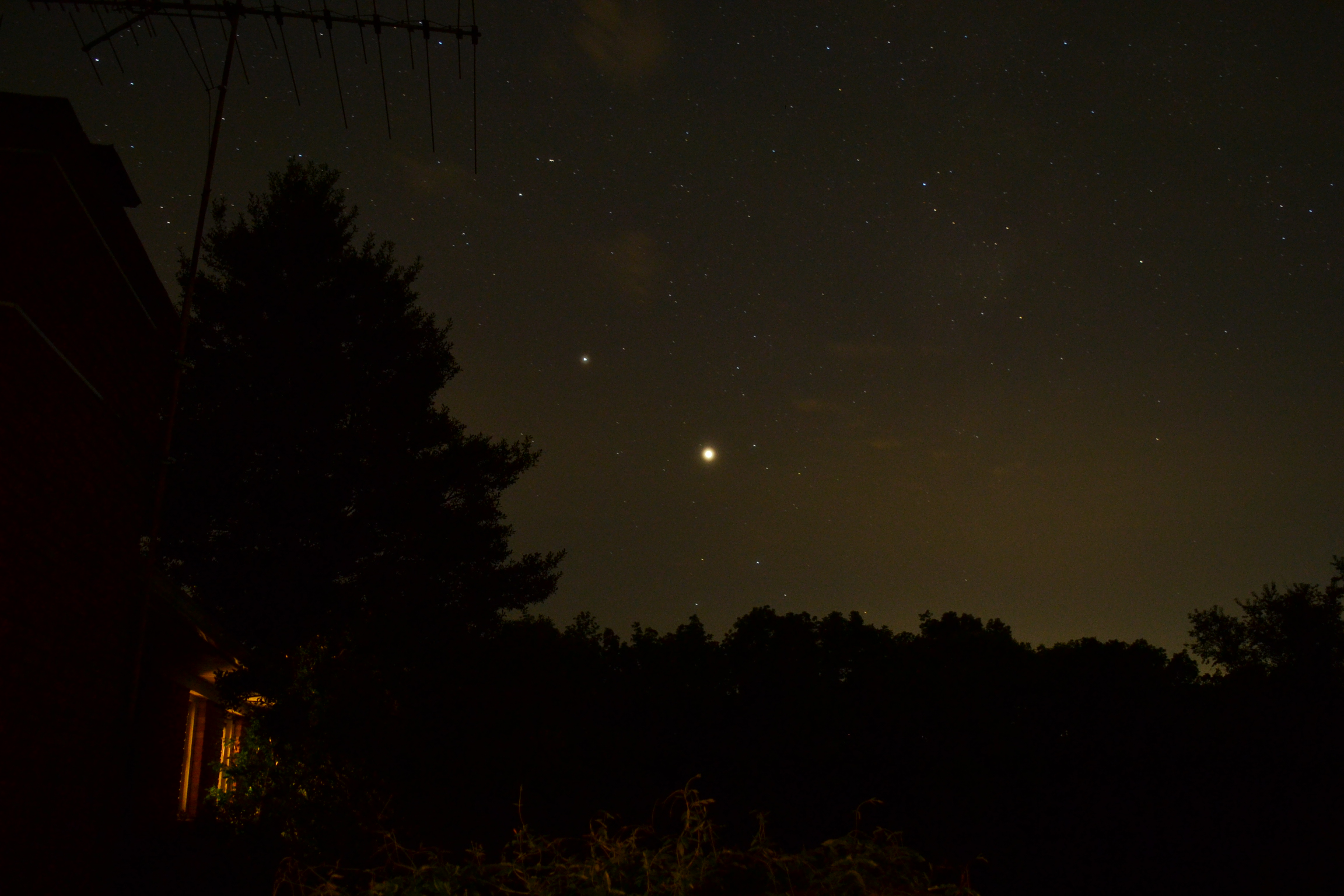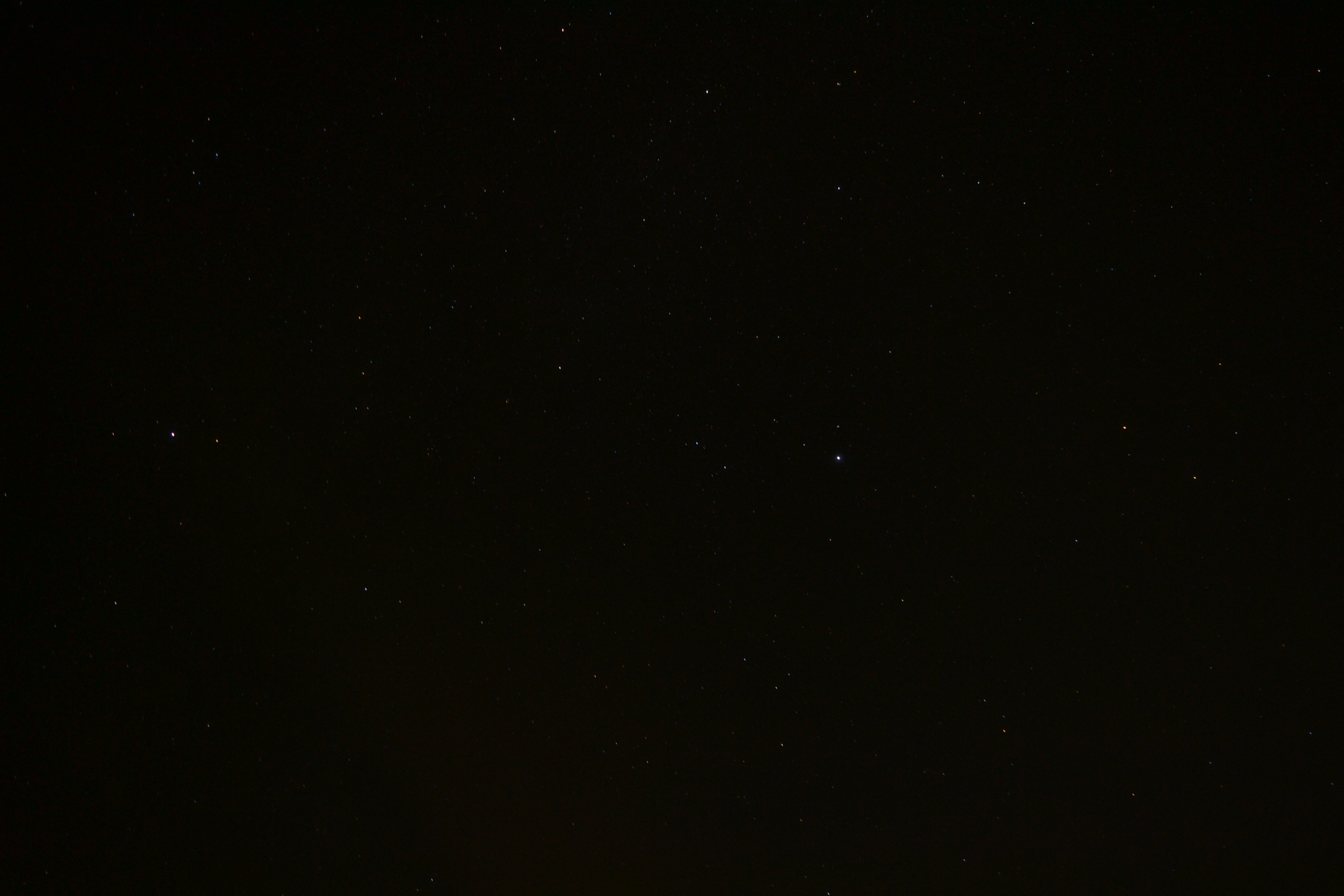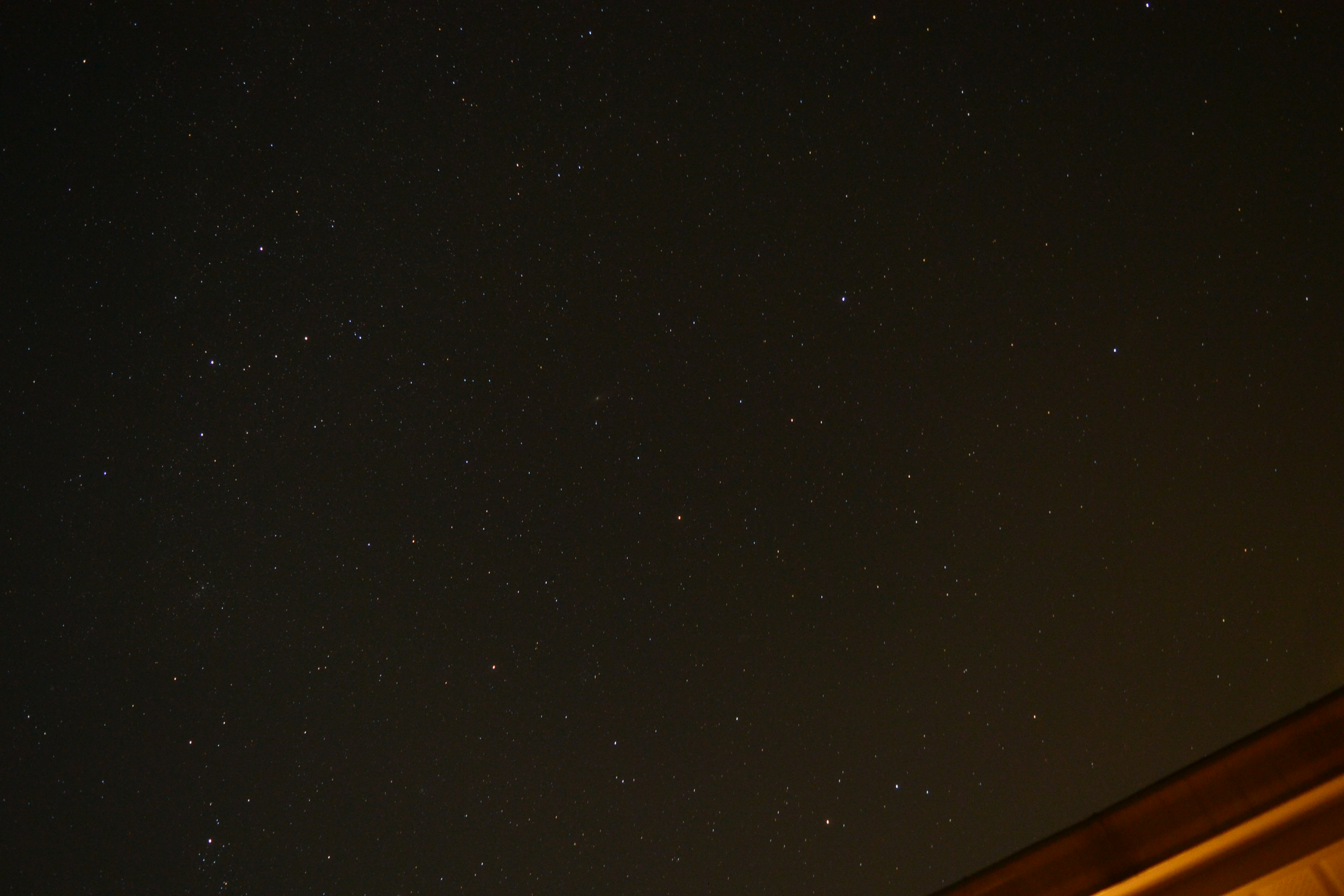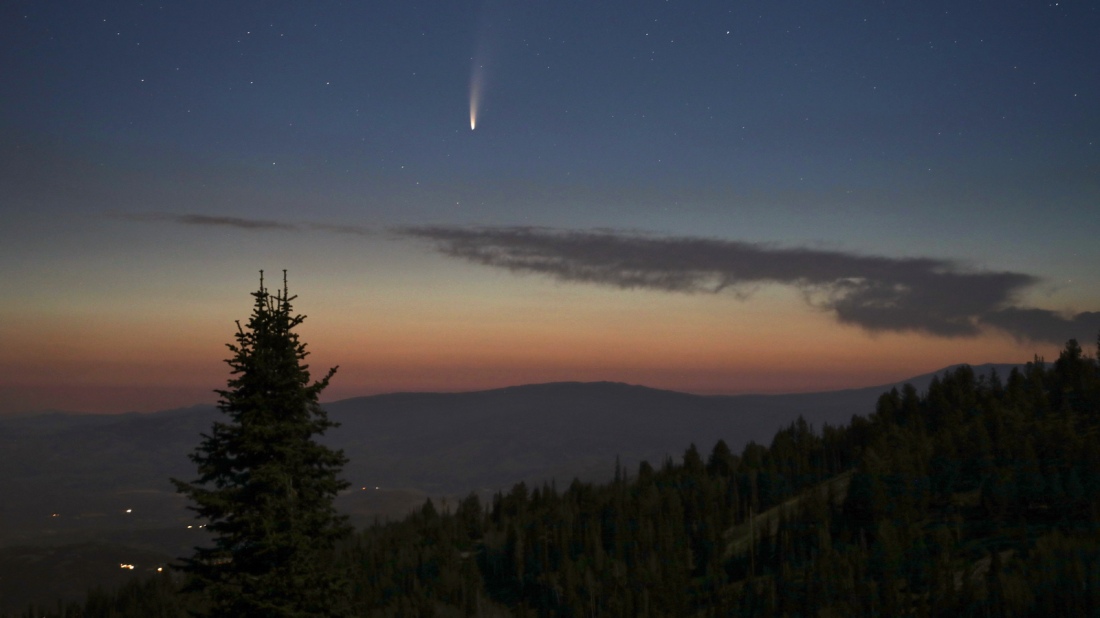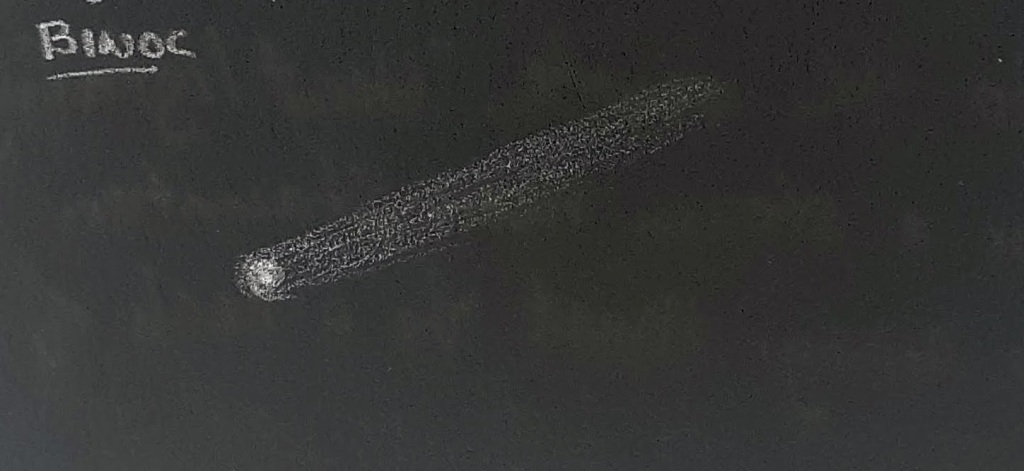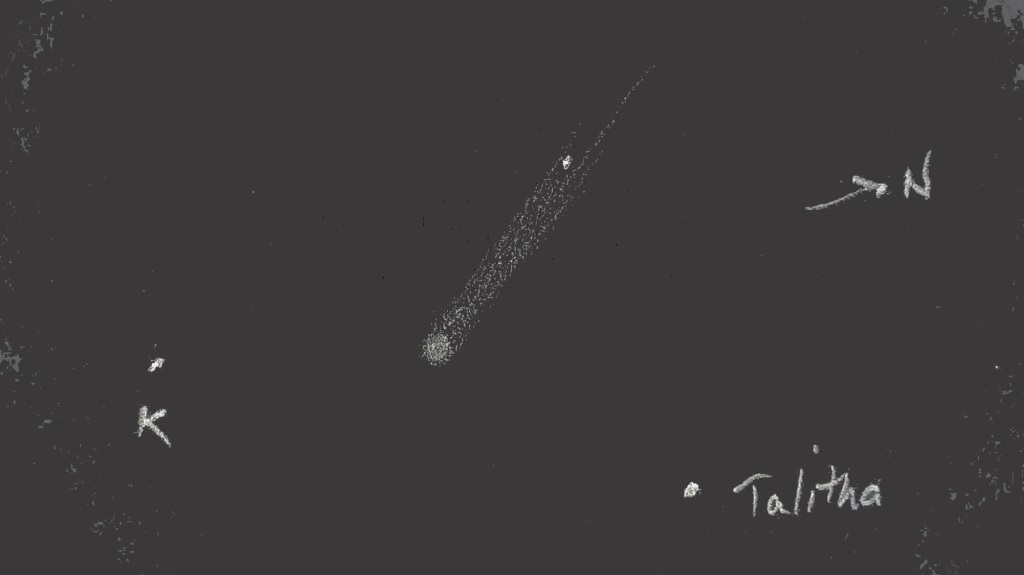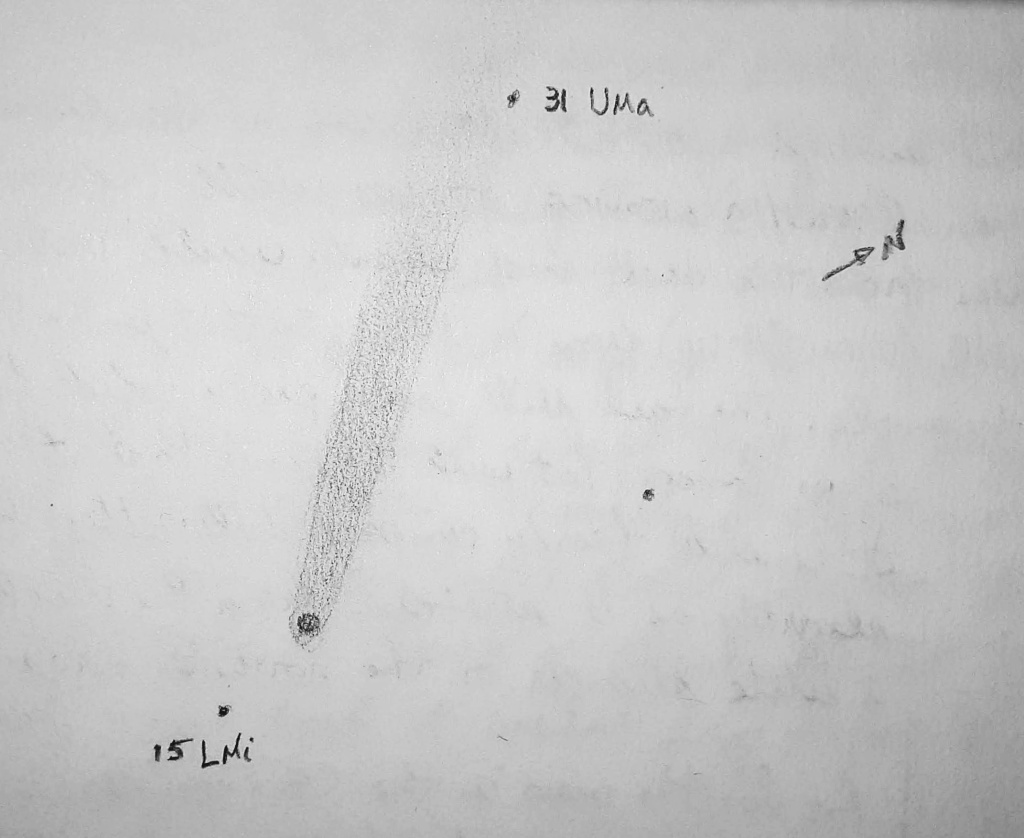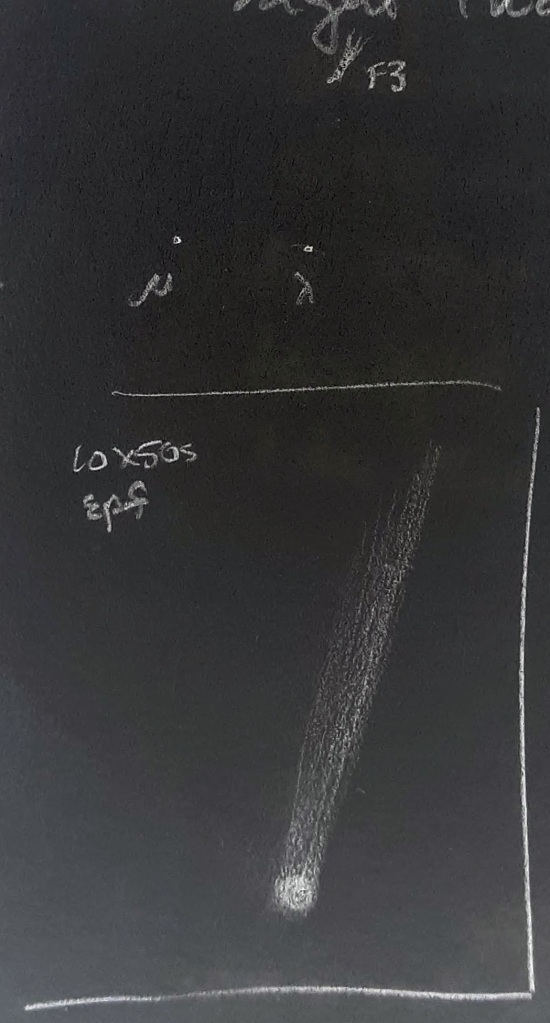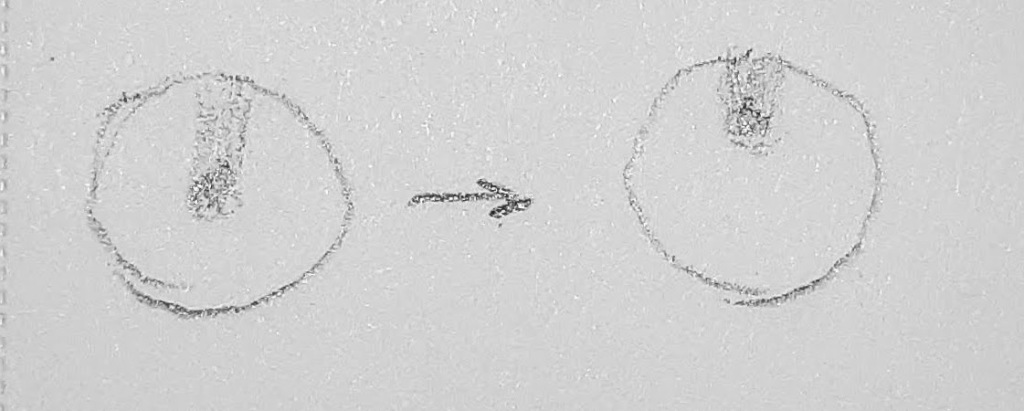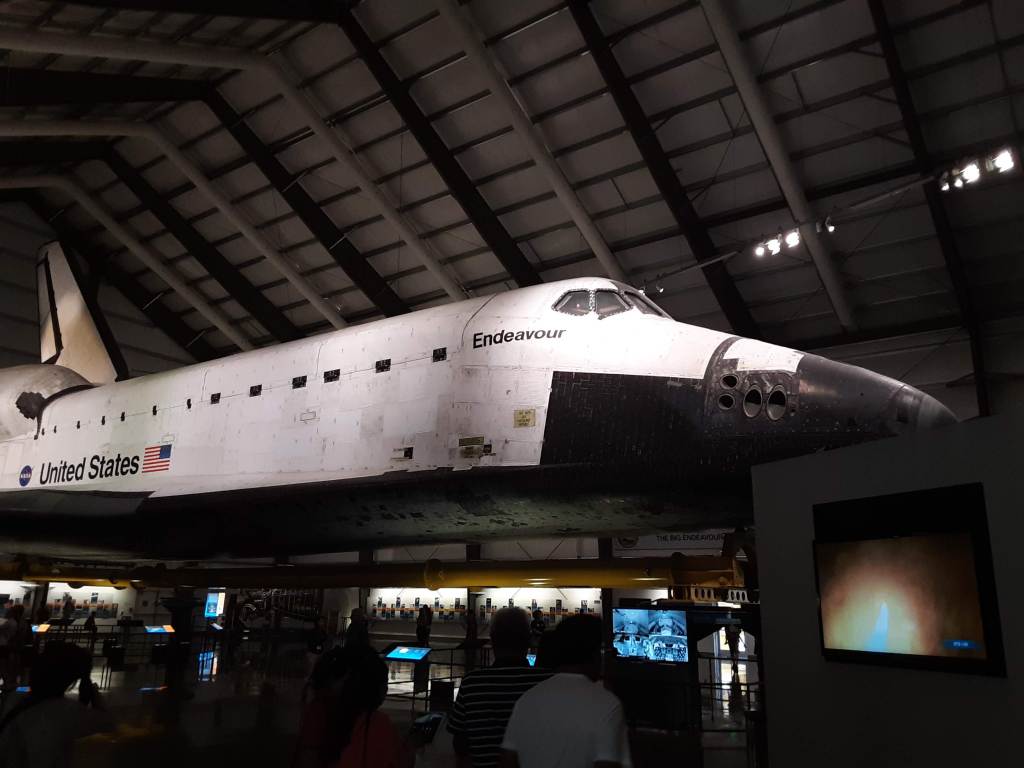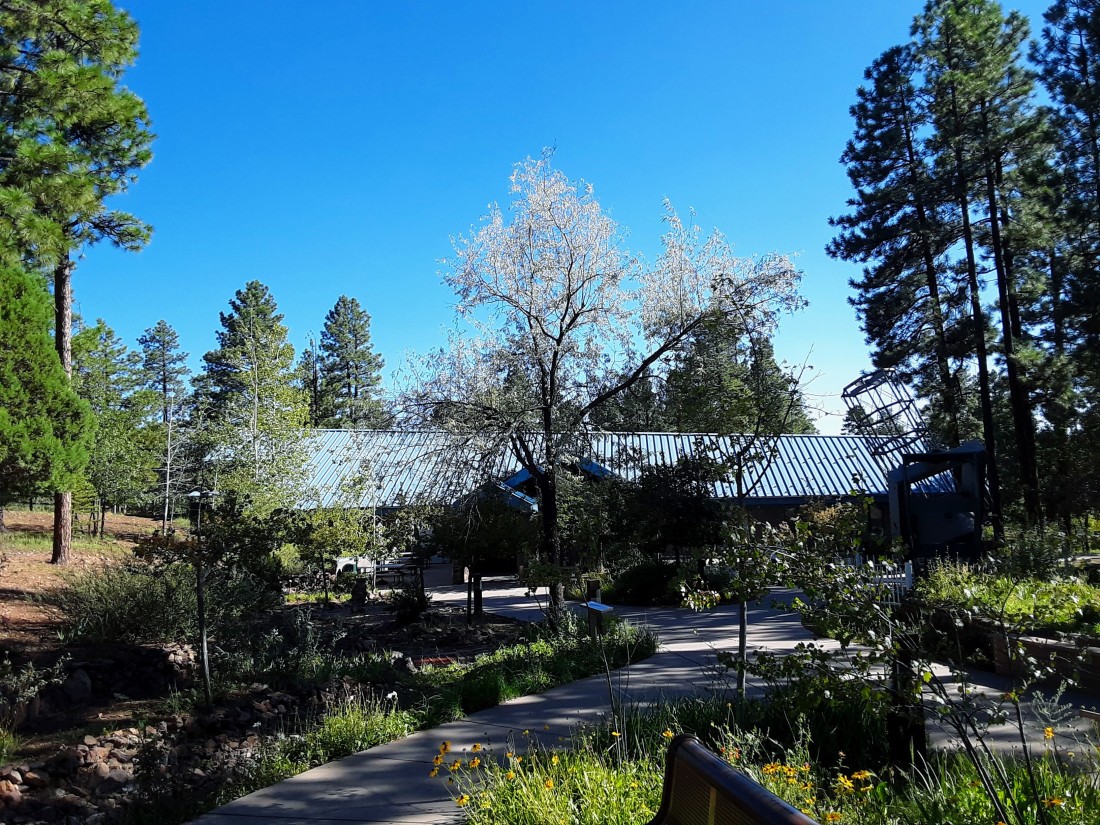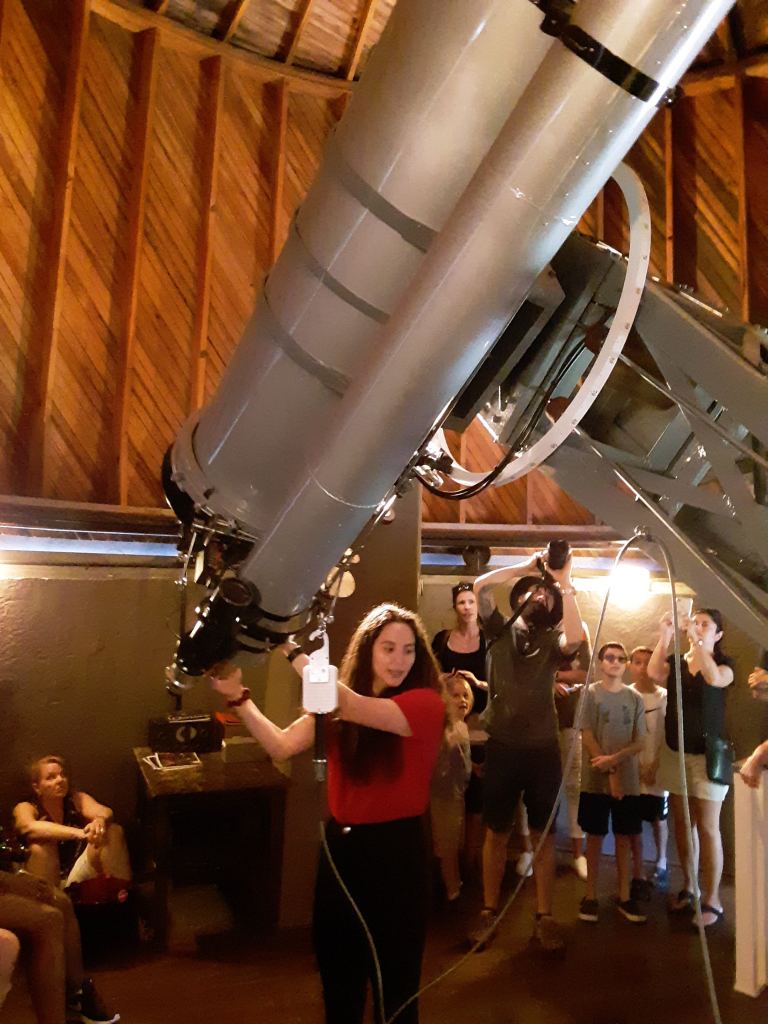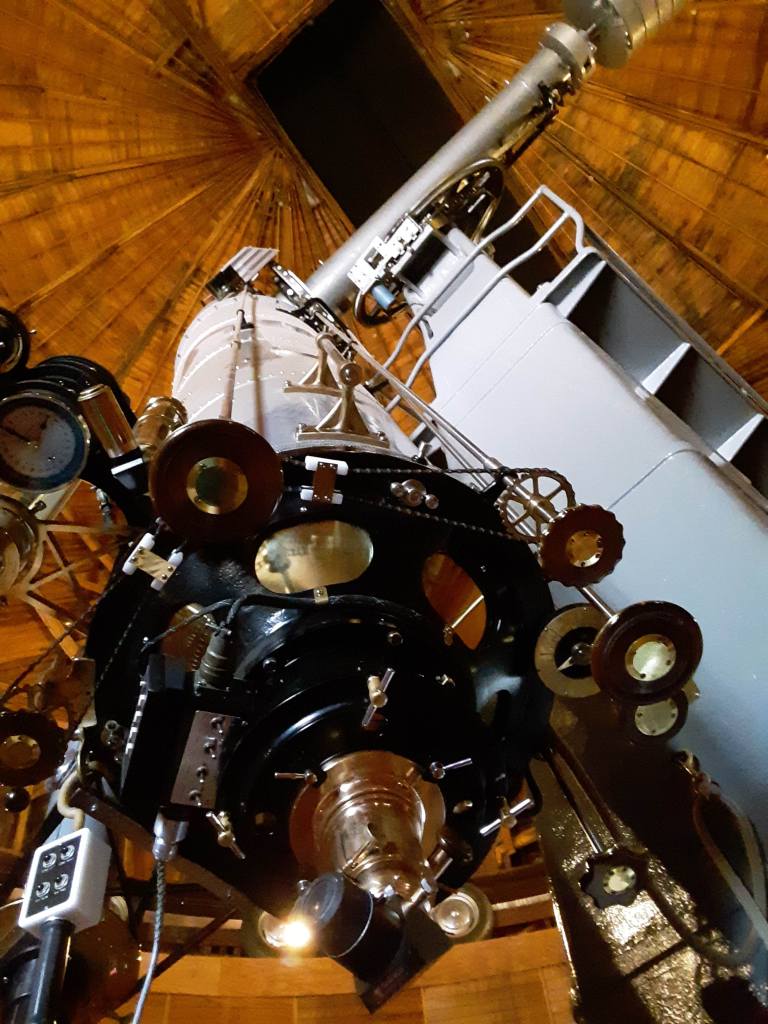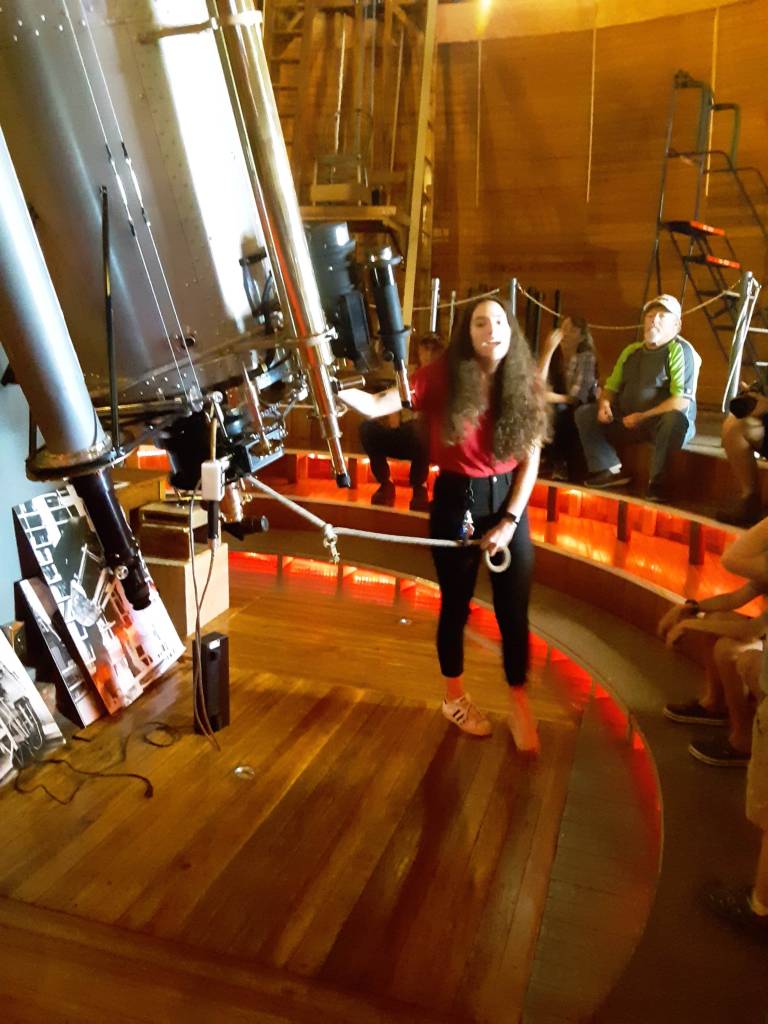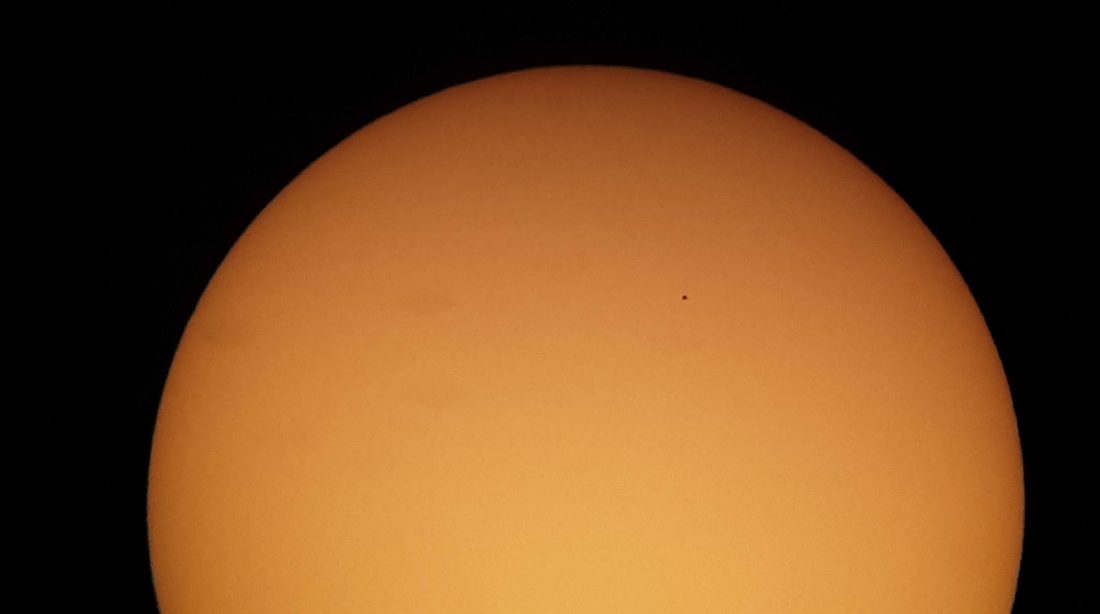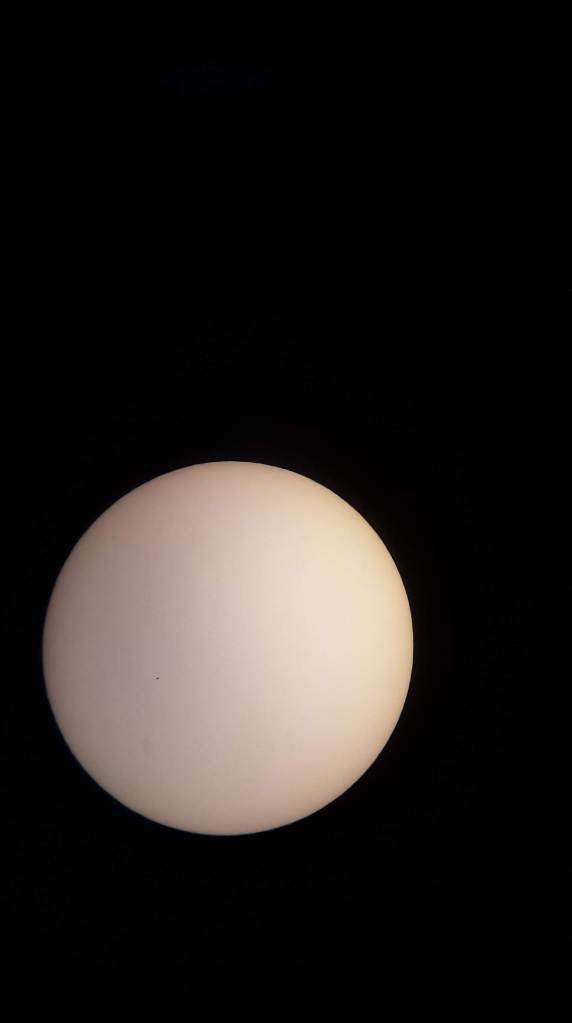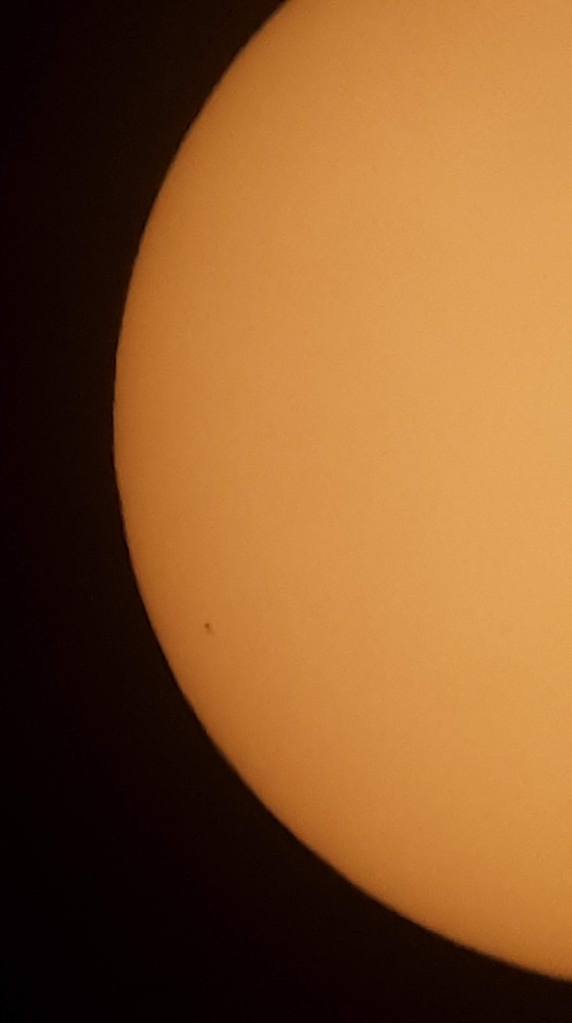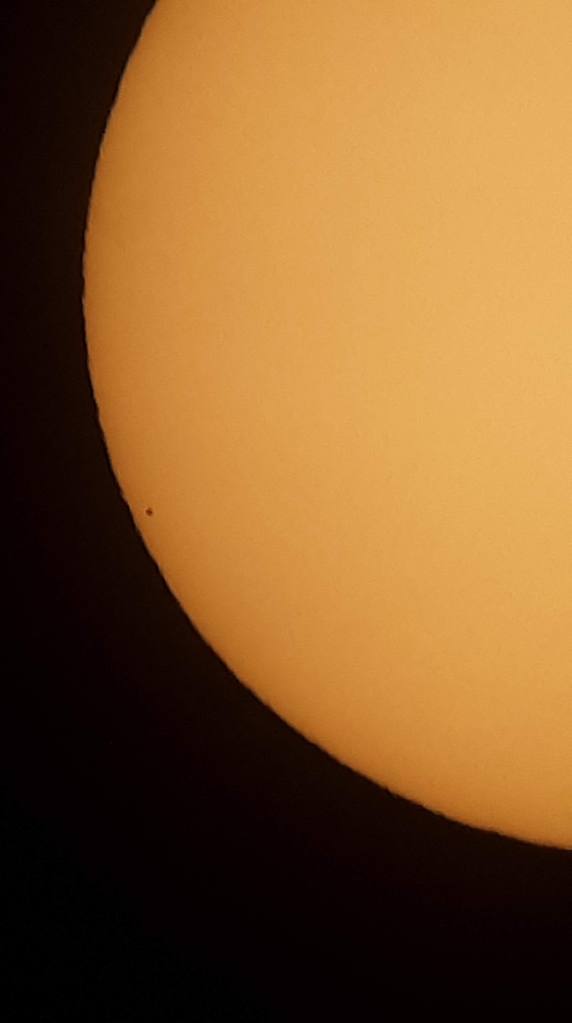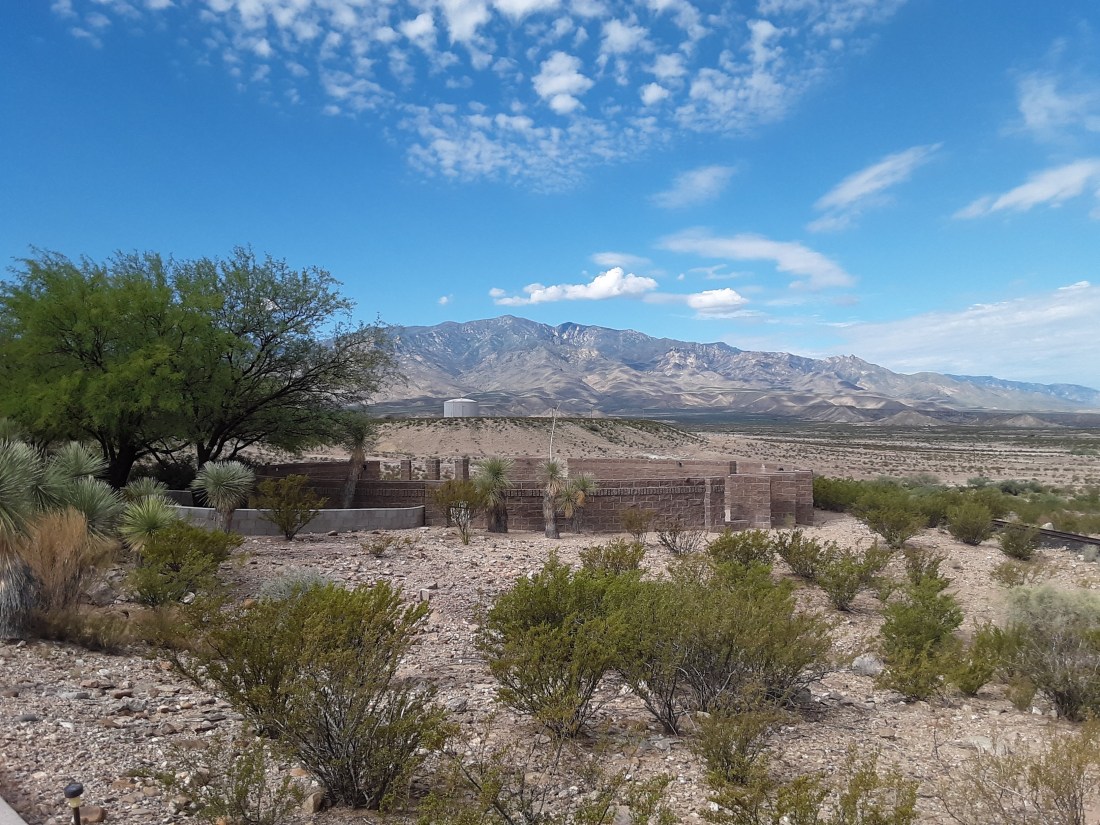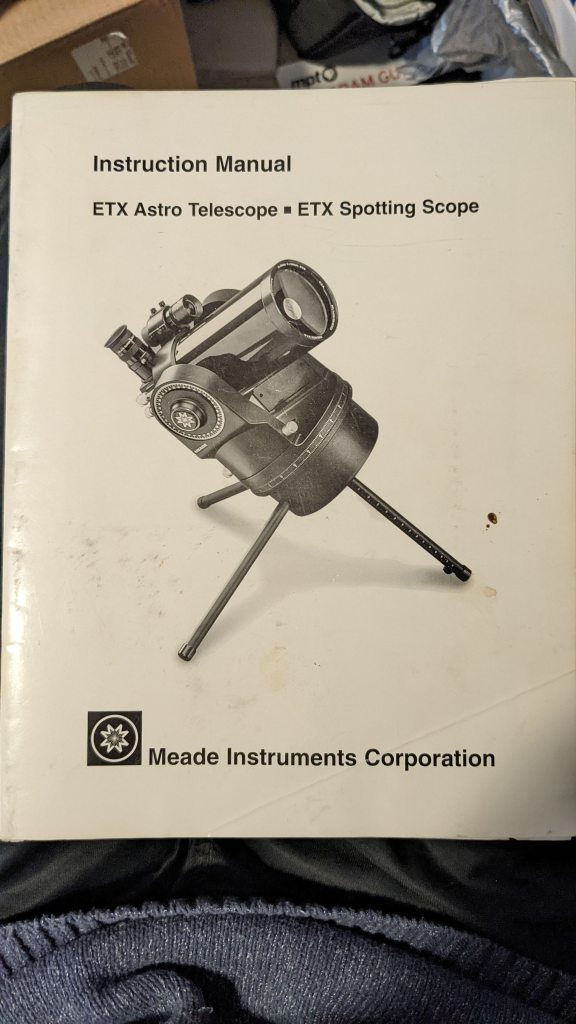
This is the story of the death and resurrection of my Meade ETX90 Maksutov-Cassegrain telescope. I bought this telescope secondhand for about $200 in 2010 from a guy in Winchester, VA. It is one of the earliest ETX-90 models. The base, as seen on the cover of the owner’s manual in the picture, has a fork mount for altitude-azimuth (alt-az) functioning and is motorized in the RA (right ascension) axis to track objects compensating for the rotation of the earth. (This works best with the legs attached as shown in the picture, but it works without them, too.) It is not a go-to or computerized mount, so one must find one’s own way around the sky. Shortly after I bought it, the motor tracking failed, making it a fully manual scope. The fine motion controls to make small adjustments this way or that have become increasingly sticky and curmudgeonly over the years, making the scope less fun to use. That’s too bad, because the optics are actually not bad for a 3.5″ f/13.5 scope. I’ve clearly seen Jupiter’s Great Red Spot with it, for example, and better than with my 8″ f/4 Newtonian. So it has been a good scope, but had fallen into disuse due to the crotchety mount.
Well, early in 2021, or maybe even in 2020 (time has lost all meaning during the pandemic), once when I planned to use the ETX90, when I opened its case I found that both the fork arms had sheared off from the base of the mount. I’m not sure exactly how this happened, but it was not well secured in its case – no foam padding or anything – so I suppose it got a hard jostle at some point at just the wrong angle, and BANG! There you go. While annoying at first, this actually opened up some possibilities for remounting the thing and making it useful again. I had already been giving thought to a number of options, and now I had only to settle on one.
My first thought was to try to find a new or used base to replace the cranky, broken one. These turned out to be quite rare and rather expensive – at least 3/4 of what I paid for the whole setup in the first place. I thought I could do better. As I tinkered with the broken pieces, figuring how to get the still-attached fork arms off the optical tube assembly (OTA), I found that there were two trunnions, or round bearings, built onto the OTA, as can be seen in the first picture below. This narrowed my thinking for a new mount to building a small, tabletop Dobsonian mount.
John Dobson popularized this sort of alt-az mount about five decades ago in an effort to make astronomy more accessible to the general public. His design was built from plywood and scrap odds and ends mostly so it would be as cheap and easy to make as possible. The design has since become wildly popular, not only with amateurs making their own mounts and scopes, but also with mass production consumer telescopes, and even with the most high-end professional research telescopes you’ll find on the planet. Its simplicity is what makes it attractive – a box with bearings on the sides, sitting on a turntable. With that, you can spot anyplace on the sky.
Most homemade Dobsonian (“Dob”) mounts are for telescopes of 6″ or more aperture and four feet or more length. I wanted to make one for this scope of 3.5″ aperture and one foot in length. Again, plans or even examples of such a small setup are remarkably rare on the internet, at least in any of the places I looked. Some I found were modified Dobs with only one vertical arm. This makes for an interesting and attractive option, even used in some consumer versions, but it complicates the construction by introducing unbalanced forces. Frankly, my skills in building things just didn’t seem to be up to that. To be really honest, I wasn’t sure my skills were up to building a simple, straightforward box, based on my experiences of wood shop in junior high school. So I decided to try to modify the original Dobsonian plans on my own.
The Prototype: Proof of Concept
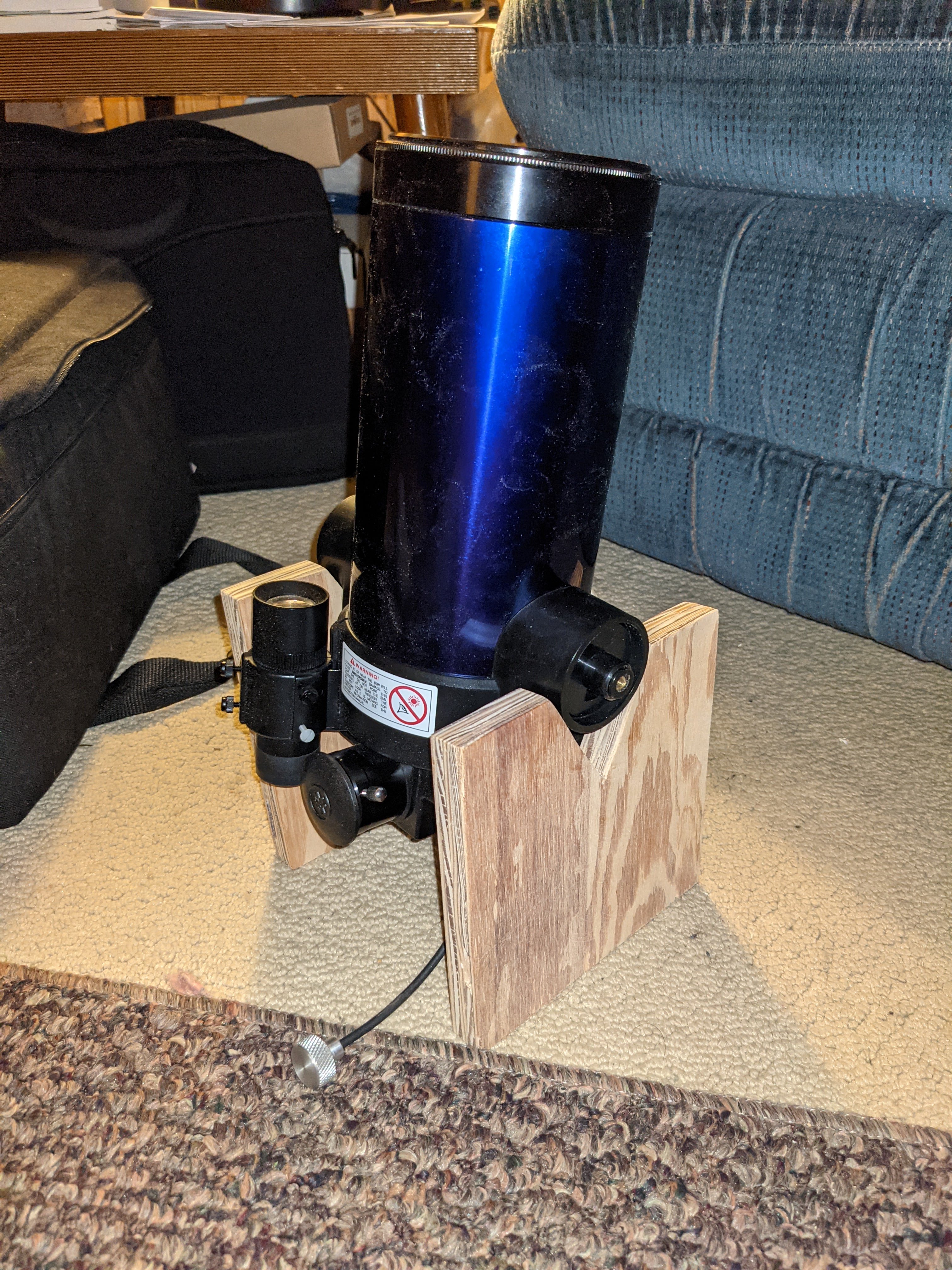
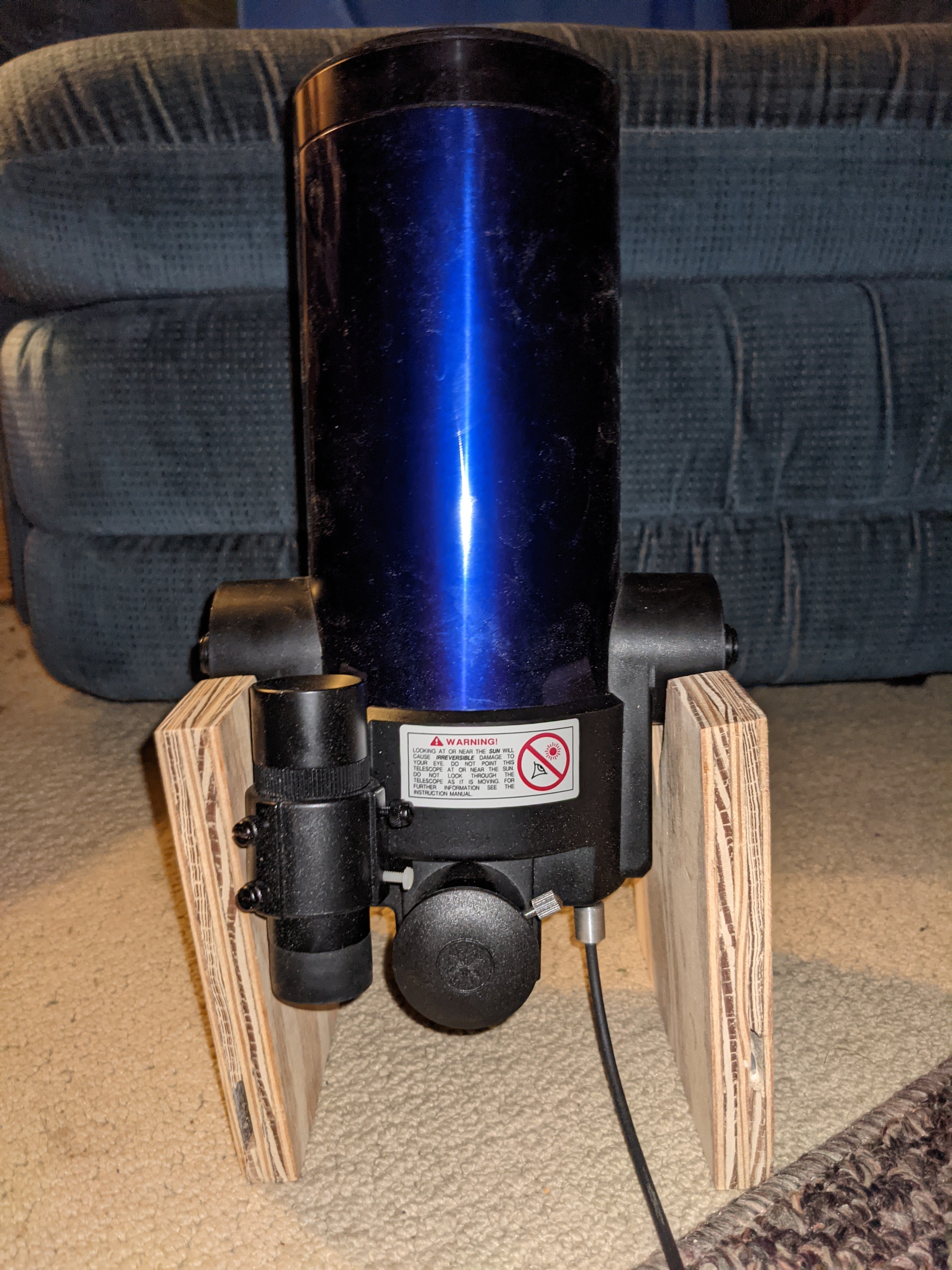
These pictures show an early attempt at a prototype made from some scrap 3/4″ plywood. I cut two pieces to be essentially the same size and cut a V-shaped notch in each to serve as the bearing for the trunnions on the OTA. It kind of worked, mostly. I wasn’t sure about how well balanced it was going to be, but it was a start. I even took this simple version outside to the deck and played with it a bit on the table out there. Okay, not well balanced at all. Apparently, all the balance came from torque or tension applied by being screwed in place with the now gone fork arms. This could be a problem.
While noodling around on the internet one day, I found a picture of someone’s ETX-90 with no trunnions. On further investigation, I found that, while I thought the trunnion structures were part of the moulded plastic end of the OTA, they were in fact easily detachable. This was exciting news! I could correct the balance problem by removing the trunnions! But, without the trunnions, what will hold the OTA? The original Dob plans call for a box built snuggly around the OTA and onto which trunnions are attached on the sides. This allows for finding the balance point of the OTA and even being able to adjust one way or the other to accommodate heavier eyepieces or whatnot. Since my OTA is so short, and my woodworking skills are so feeble, I didn’t really want to go that route.
I hit on the idea of buying some tube rings, which are pretty much what they sound like: hinged rings that clamp around the optical tube to hold it fast and attach to a mount. This would also give me options. For example, if I wanted to try the one-armed mount, I could just use a tube ring to hold it on…. well, that was still going to be more complicated. With tube rings or a tube ring, I could screw trunnions on what would ordinarily the ring’s top and bottom where it would screw onto the mount and hold other equipment, and then turn it sideways so those trunnions would then be the sides. If that doesn’t make sense, you’ll see in the later pictures how it works. I went on eBay and found a pair of 90 mm tube rings for a lot more than I really wanted to pay, but they were also a pretty rare find, and they would hopefully save me a lot of hassle, so whatever.
Eventually, I found what I wanted at Michael’s, the arts and craft store. For the turntable base I found two 11″ diameter clock faces, unfinished, and an 11″ square piece of pine that would ordinarily be used for a plaque or trivet or whatnot. I took the board to Home Depot to have someone make three cuts for me that would give me the right sized pieces. My assumption here was that they would have a saw that would make nice straight, square cuts and someone who knew how to use it. I may have overestimated. The fellow who ended up doing the cuts for me seemed to be (1) kind of disgruntled, (2) only nominally skilled on aforementioned saw, (3) not at all invested in my project, and (4) really high. Consequently, my little board was pretty much brutalized and my right sized pieces were rough, uneven, and no better than if I had done them myself with my limited resources. Let this be a lesson to you all! And to me, because now I had to figure out how to make them beautiful again and work. Which I did, more or less, through some clever cutting and (for me) careful hand sanding. It also involved buying a new Dremel tool and practicing on various scraps of wood lying about. At any rate, I got it to a place that I was able to accept.
The next problem comes back to my woodworking. Here is my confession. Because I don’t have much experience, I don’t have much skill. Because I don’t have much skill, I don’t do much woodworking. Because I don’t do much woodworking, I don’t have many woodworking tools that would make woodworking a lot easier. Because I don’t have many tools or the right tools, the projects I have done have been hard and haven’t really come out square most of the time. Because my previous projects haven’t be perfect, and because I’m a perfectionist, I don’t do much woodworking. You start to get the idea. Meanwhile, I knew this was a project that would require some precision in the work if it were going to work properly. Pieces would need to be reasonably square, parallel, and smooth to provide the kind of platform that telescopic viewing requires. Again, because I don’t have things like a table saw, or a joiner, or a straight edge guide for saws, or a plane, or whatever else to make wood square, or round for that matter, this delayed the process considerably. Eventually, I decided to try to find pre-cut pieces that would come properly square or properly round to begin with. Then I would just have to do my best not to screw them up too much. This was in conjunction with my efforts at designing the required sizes of the various pieces. So some 35 years after my last engineering class, I managed to work out what seemed to be workable dimensions. Yay, me!
The pictures below show various stages of development of the assembly, from painting to putting the bearing box on the top turntable piece, adding the bearing materials between the turntable pieces, and the whole set up with two sets of trunnions. I ended up with two sets of trunnions, one pair made from the wood cutouts of the bearing slots, and the other pair a couple PVC pieces on which I needed to trim some flanges in order to get them to fit between the uprights. The PVC ones will be the preferred set, I think, because they don’t allow for lateral movement of the OTA in the bearing slots as the wooden set do.
Putting On a Coat or Two

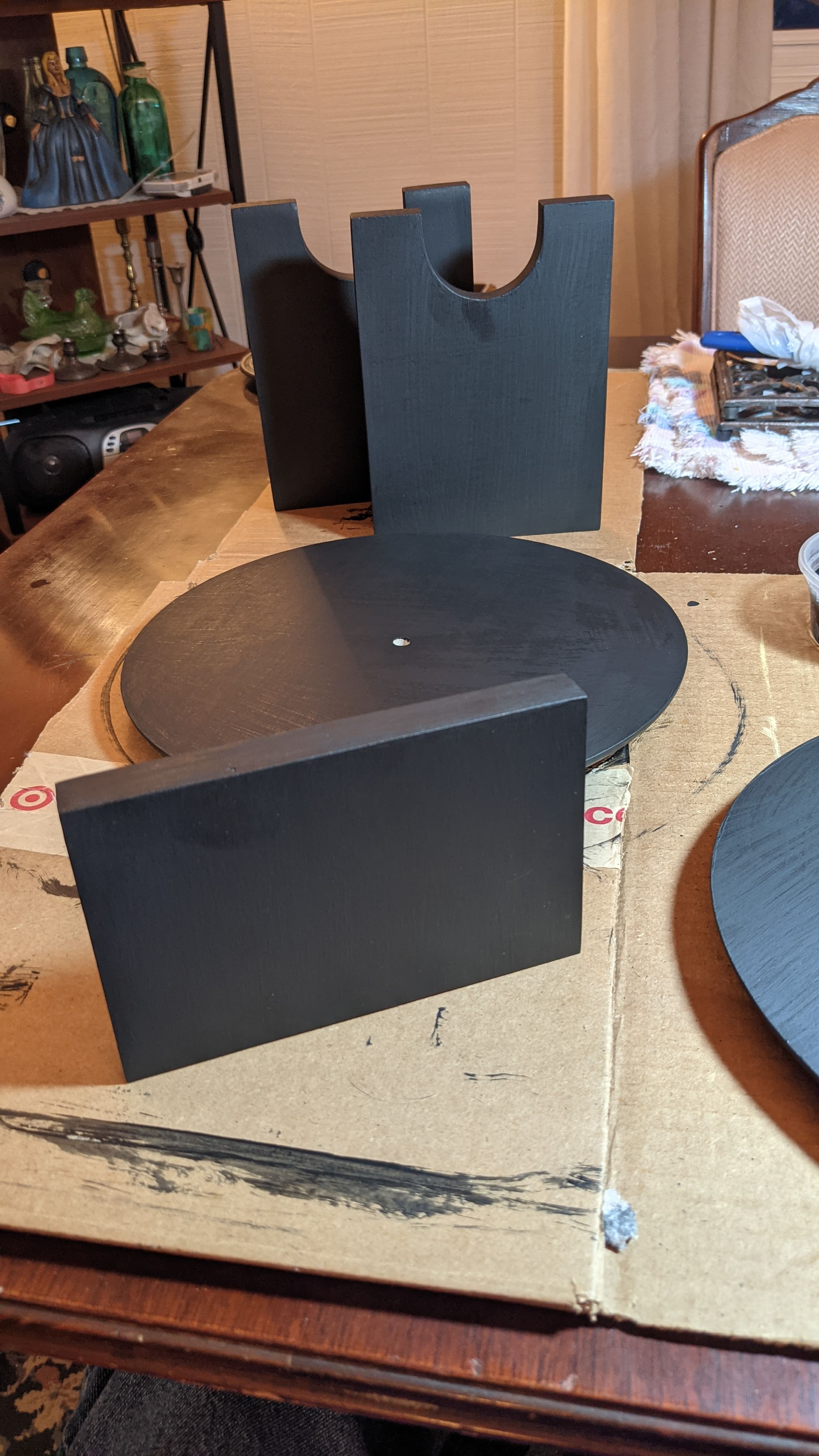
Coming Together

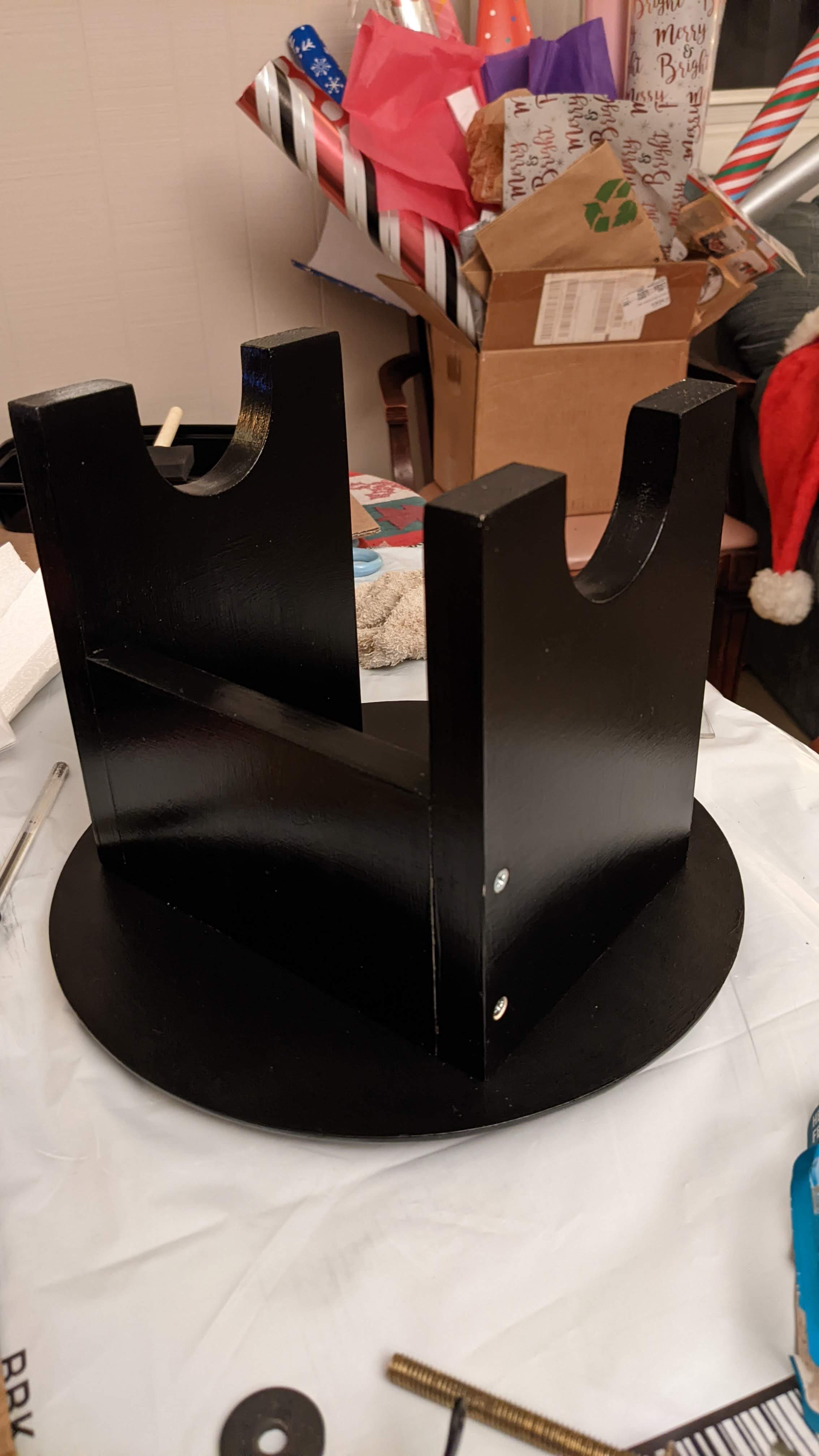
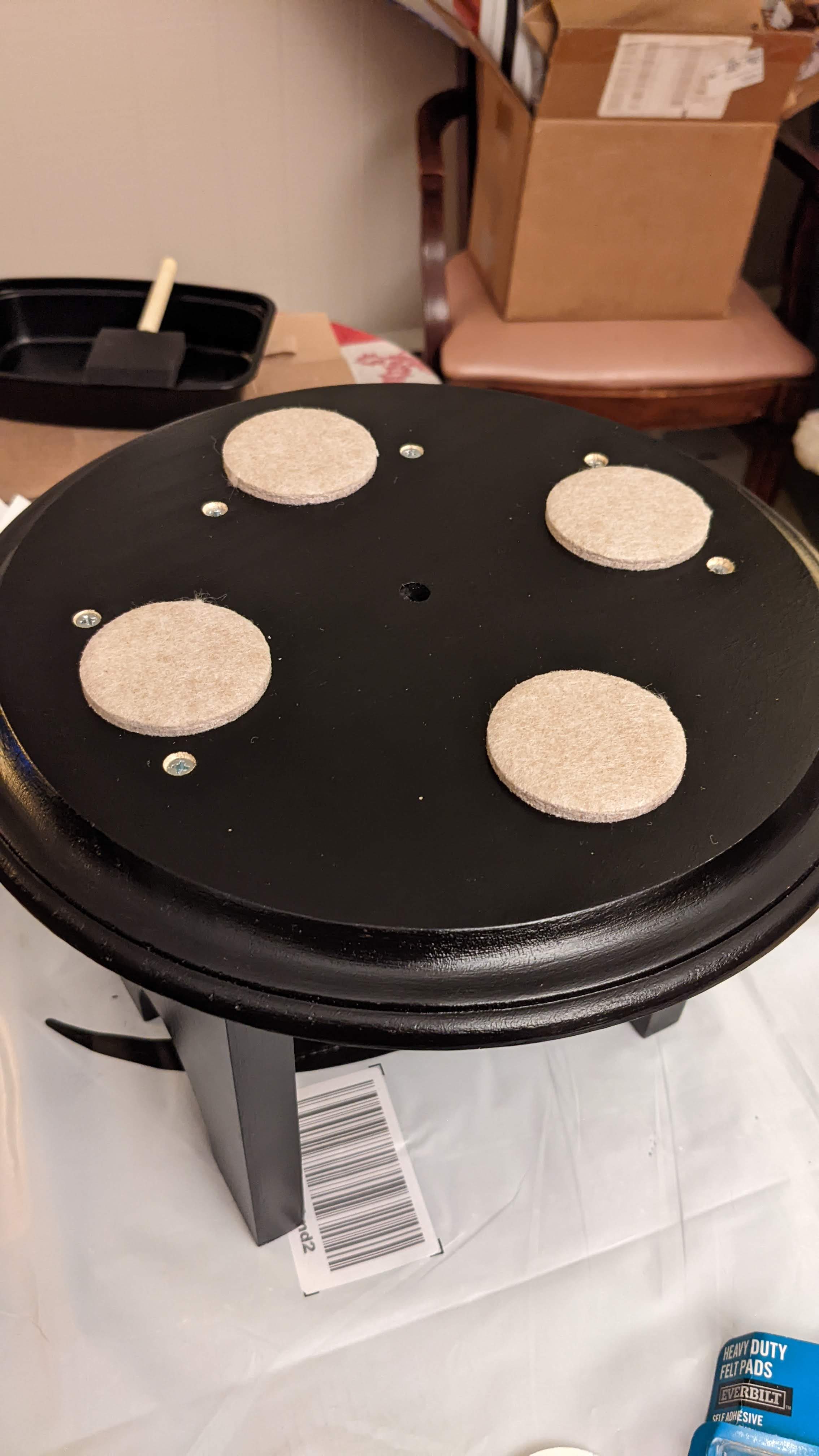
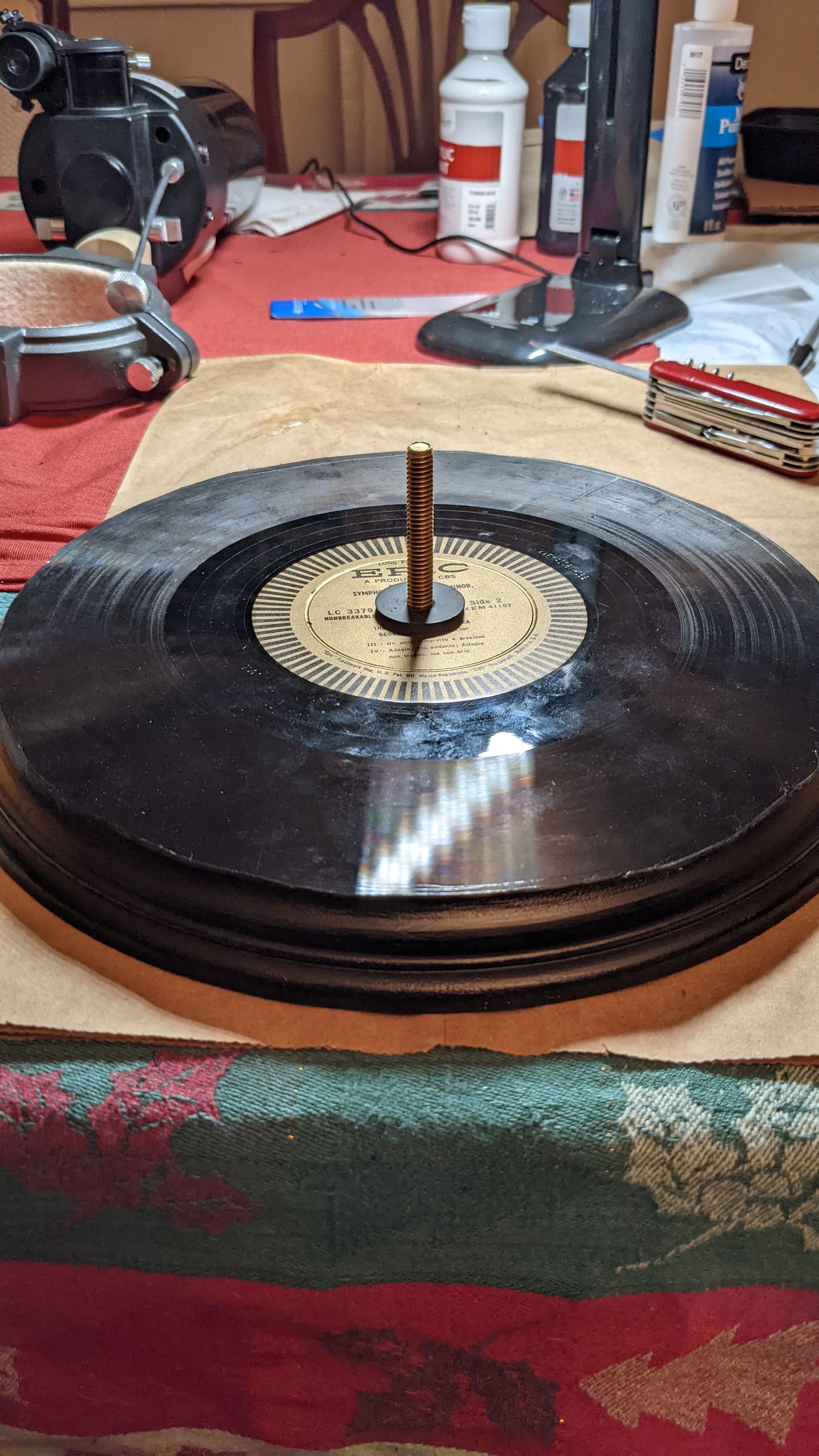
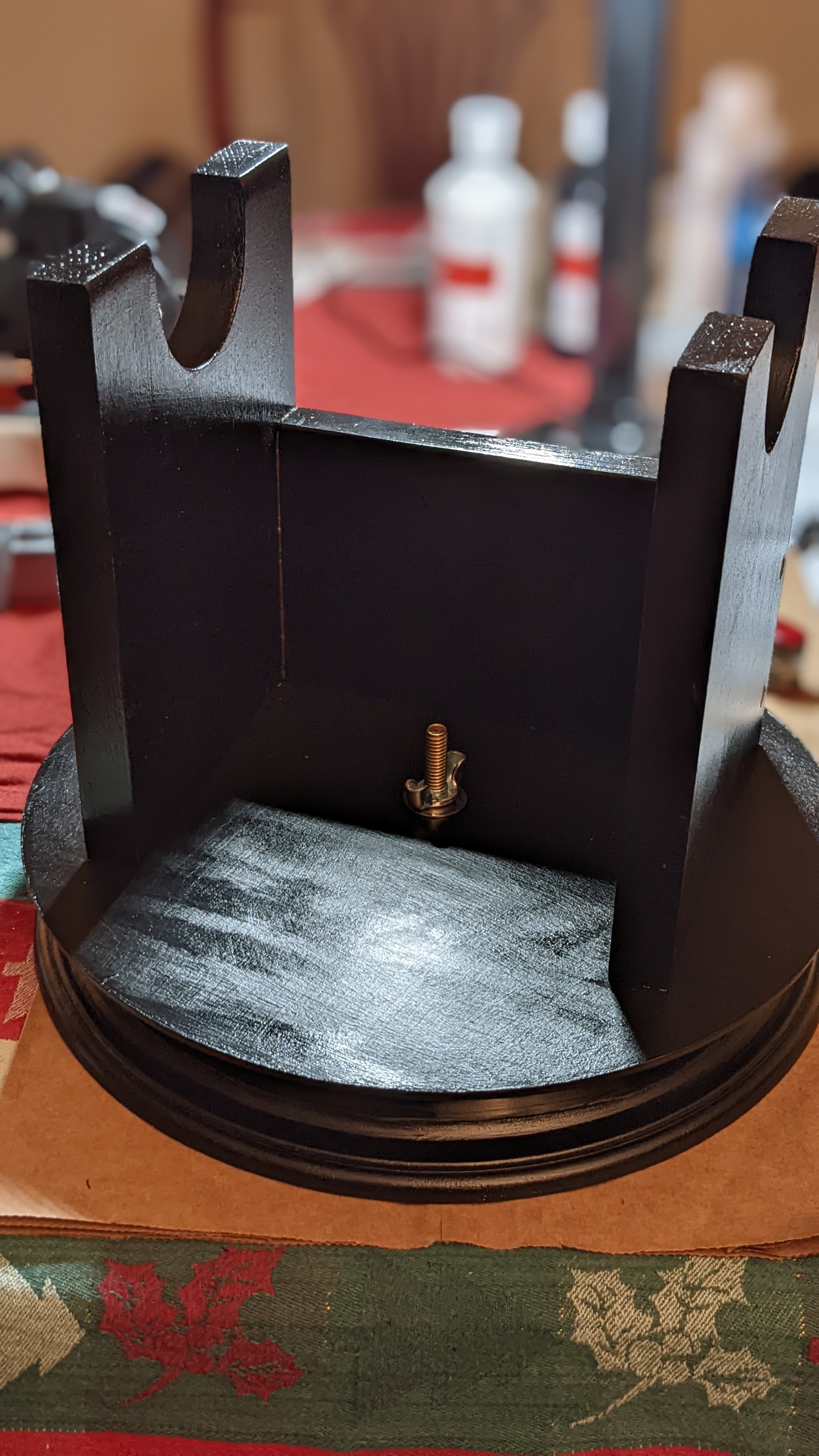
Configuration 1 – Wooden Trunnions
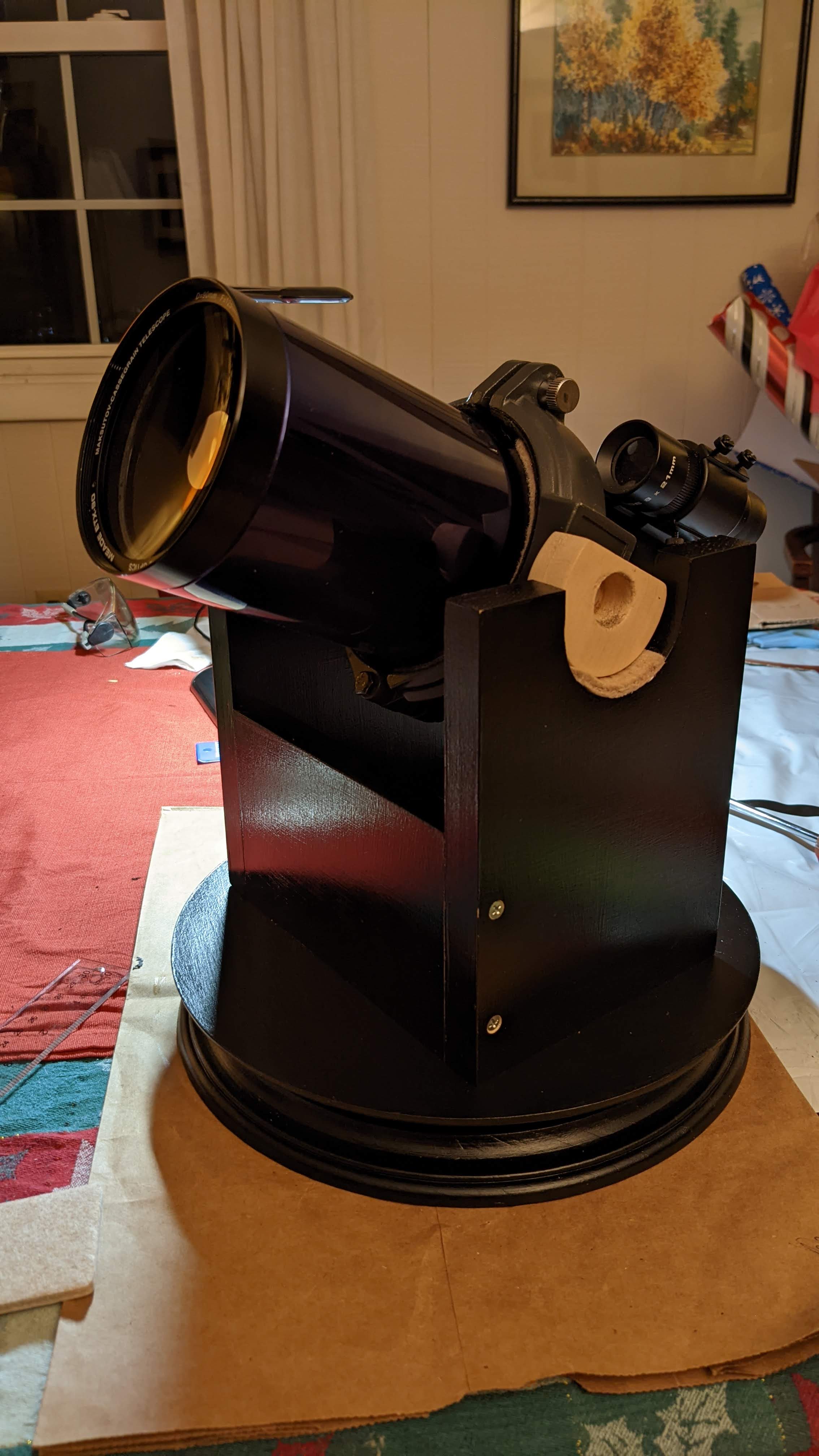

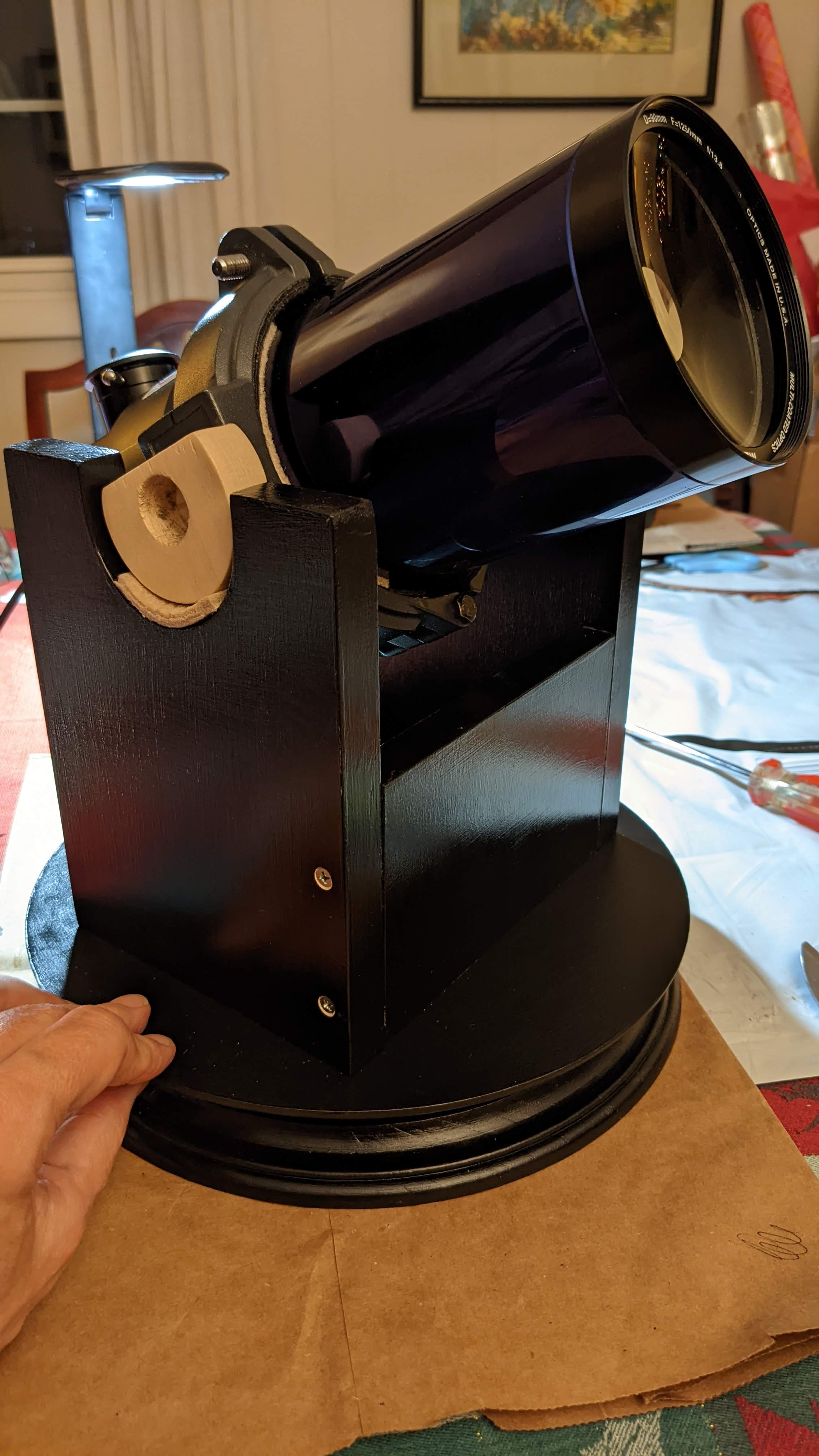
Configuration 2 – PVC Trunnions
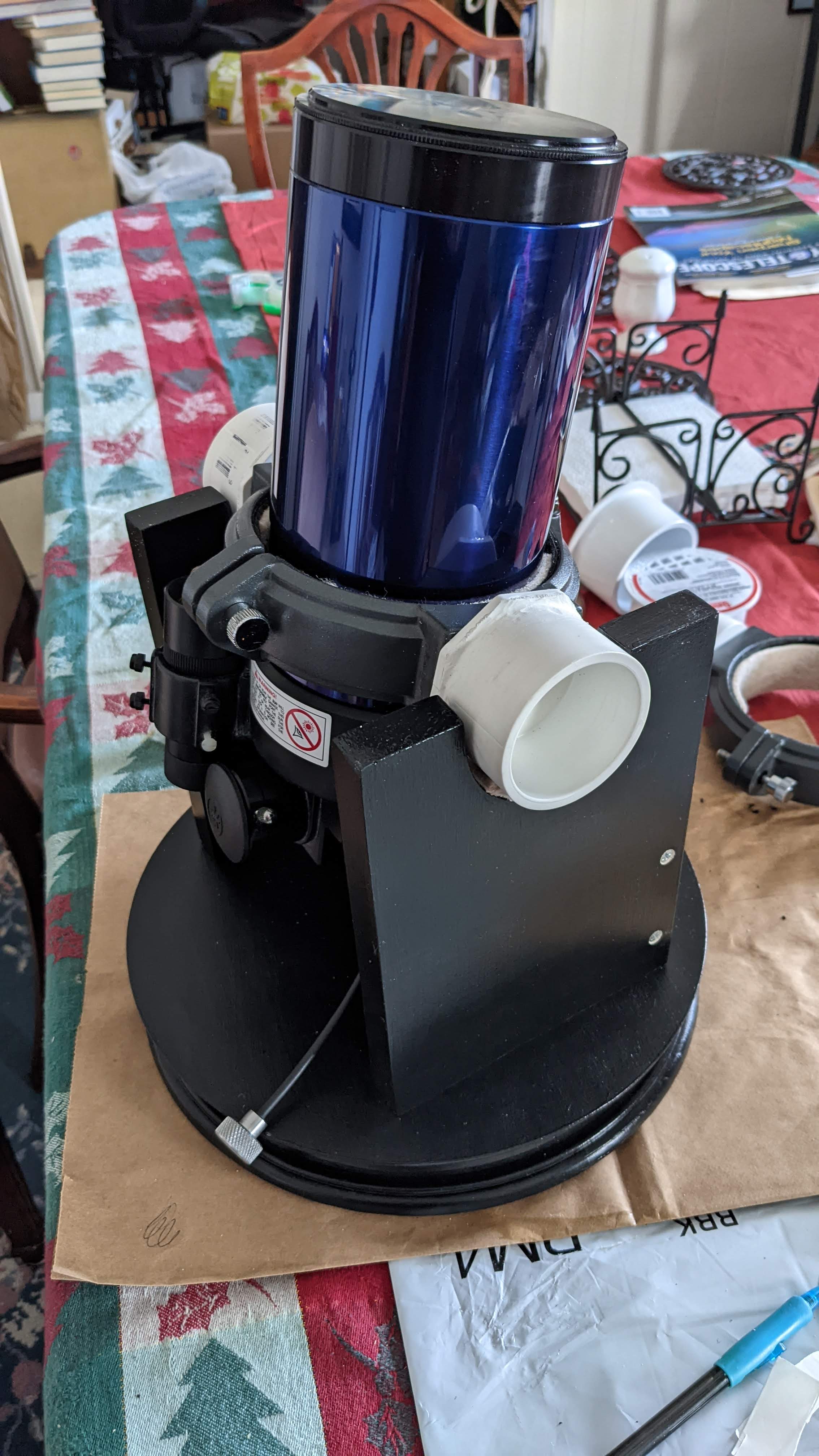

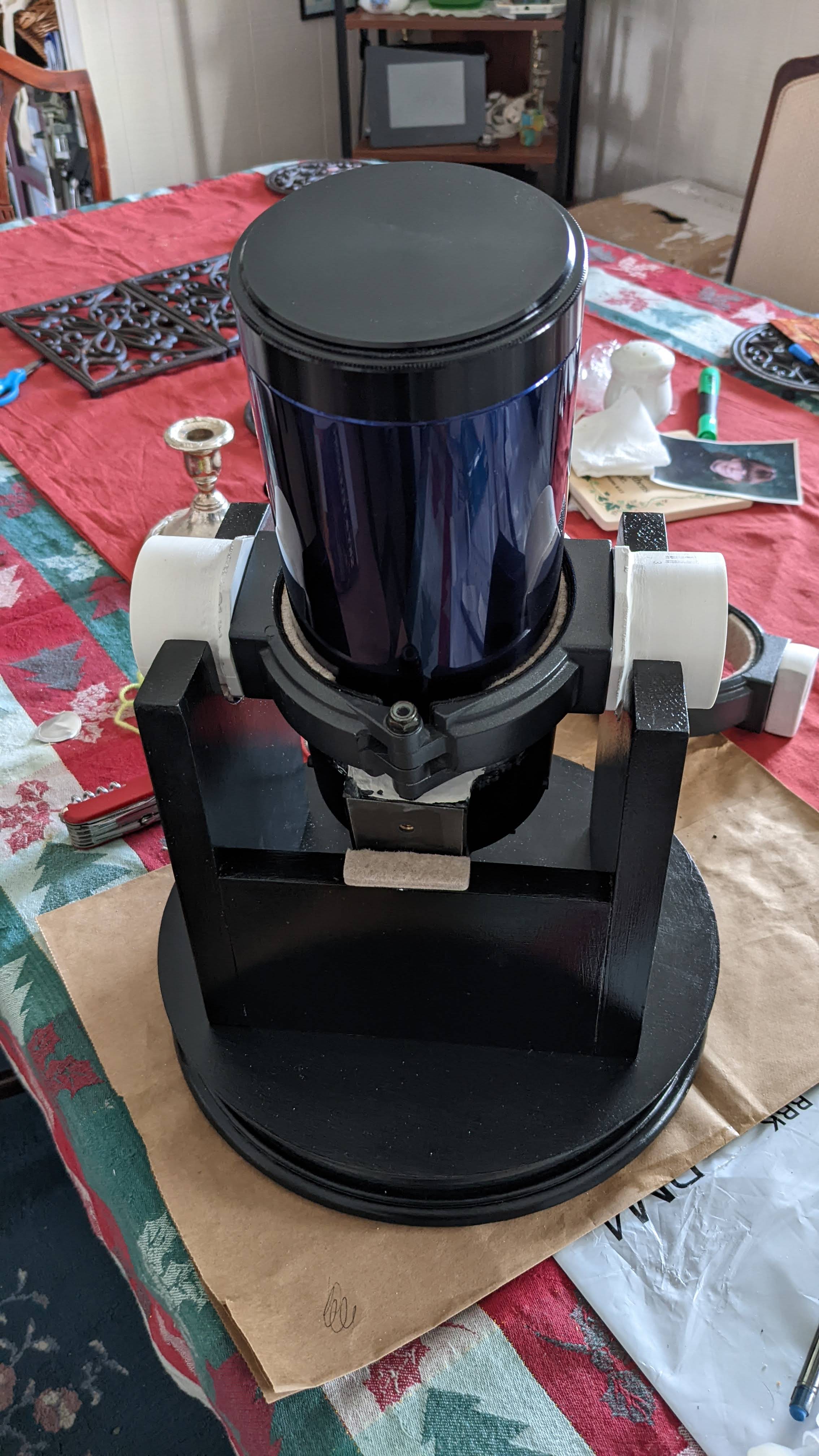

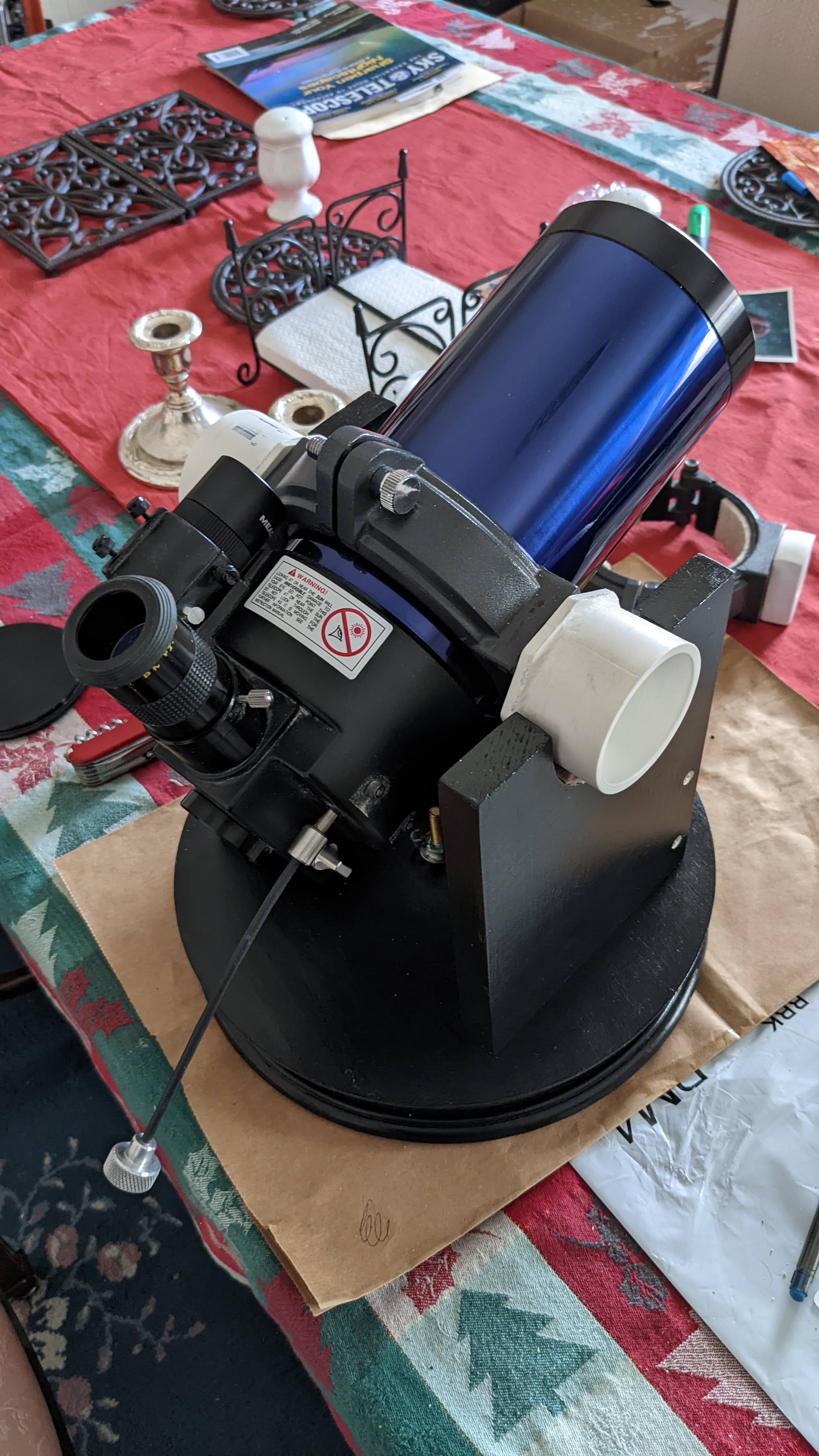
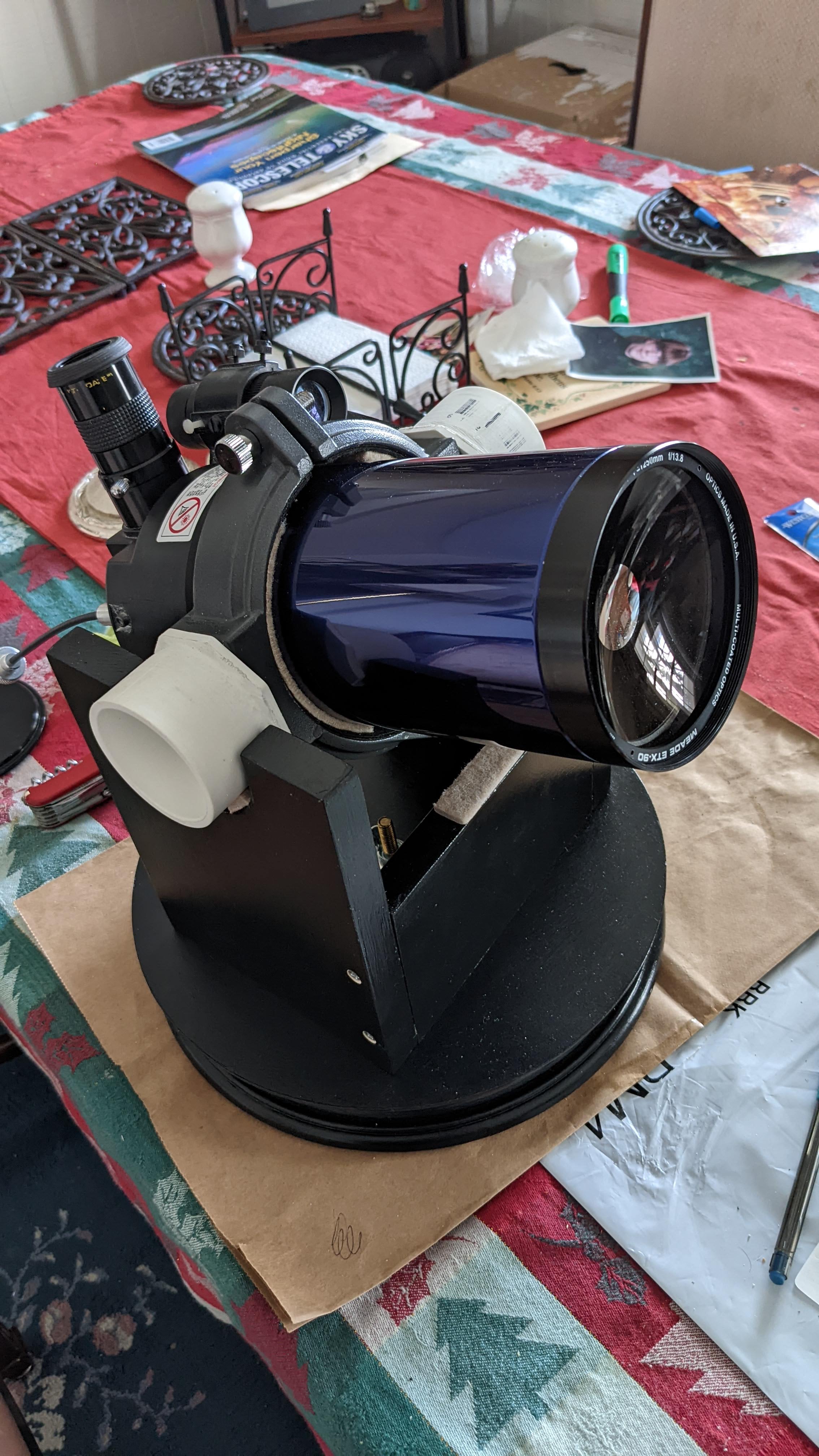
Along with the wood pieces and the Dremel, I also bought a set of hole saws with which to make the round bearing slots on either side. My next purchase was a bottle of wood sealer and some foam brushes, so I could paint the pieces to make them pretty. I bought a variety of felt pads to use in the bearing slots and between the turntable pieces, some PVC pieces to use as the trunnions, and some rubber feet to go on the bottom of the base. Other bits I had on hand include the central bolt and washers to act as the axle for the turntable, various screws, an LP record to serve as the bearing plate for the turntable, and the black acrylic paint. On the whole I spent a lot more on the project than I intended, and probably more than if I had just bought a used ETX base on eBay in the first place. But I learned a lot and have increased not only my woodworking skills (a bit) but also my courage to try. That’s worth the price of all the bits.
Today, I managed to get the tube balanced with an eyepiece in and the objective lens cover off. I also aligned the finder scope. The movement of the turntable is pretty smooth — not quite as smooth as I’d like, but I think it will do. The same is true with the rotation of the OTA on the altitude bearings (trunnions); it’s a little sticky, but should work. Now I just need a decent, clear night that isn’t too dang cold so I can try it out and see if it really does work.
Here’s a link to a video showing the balanced scope functioning nominally.
